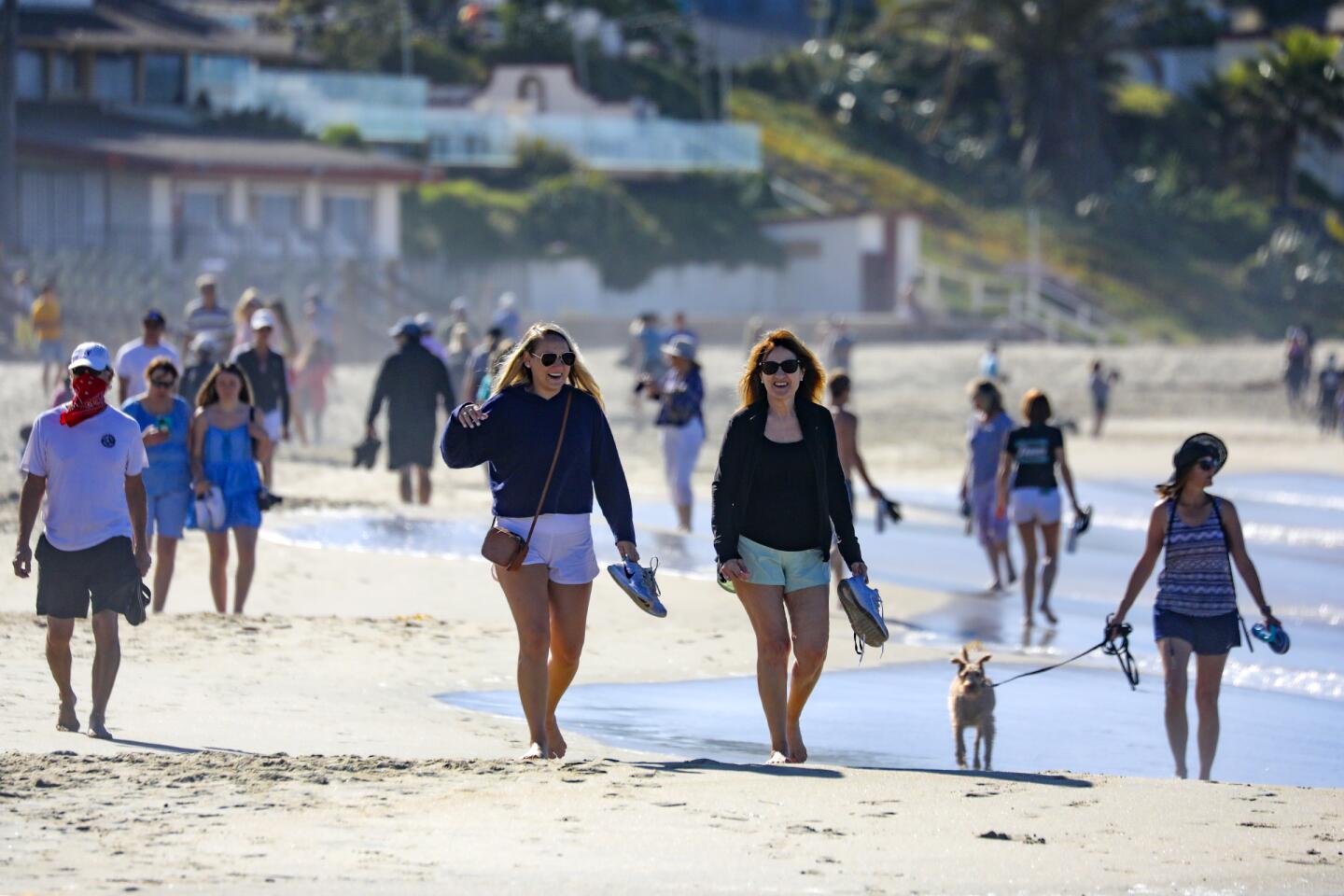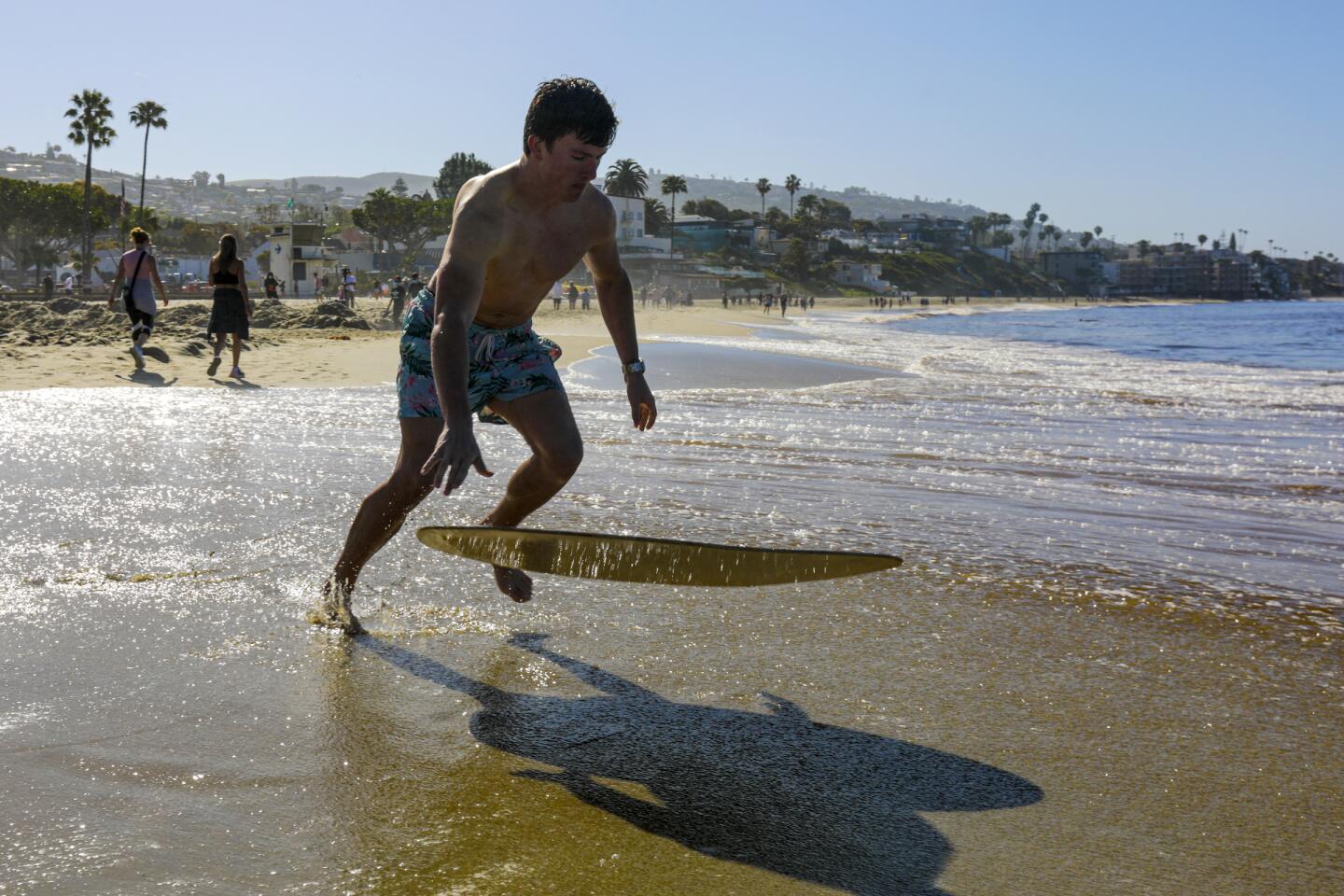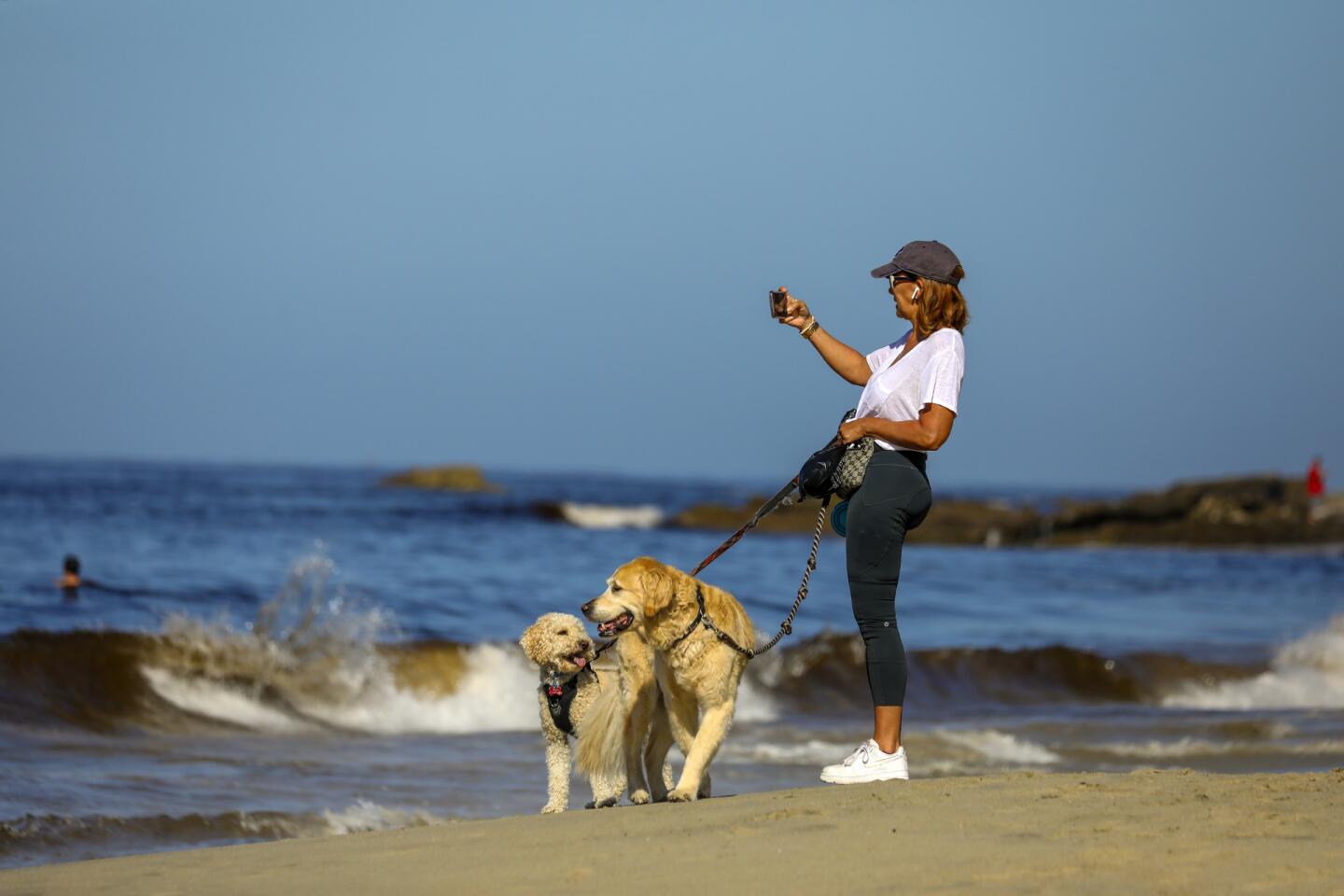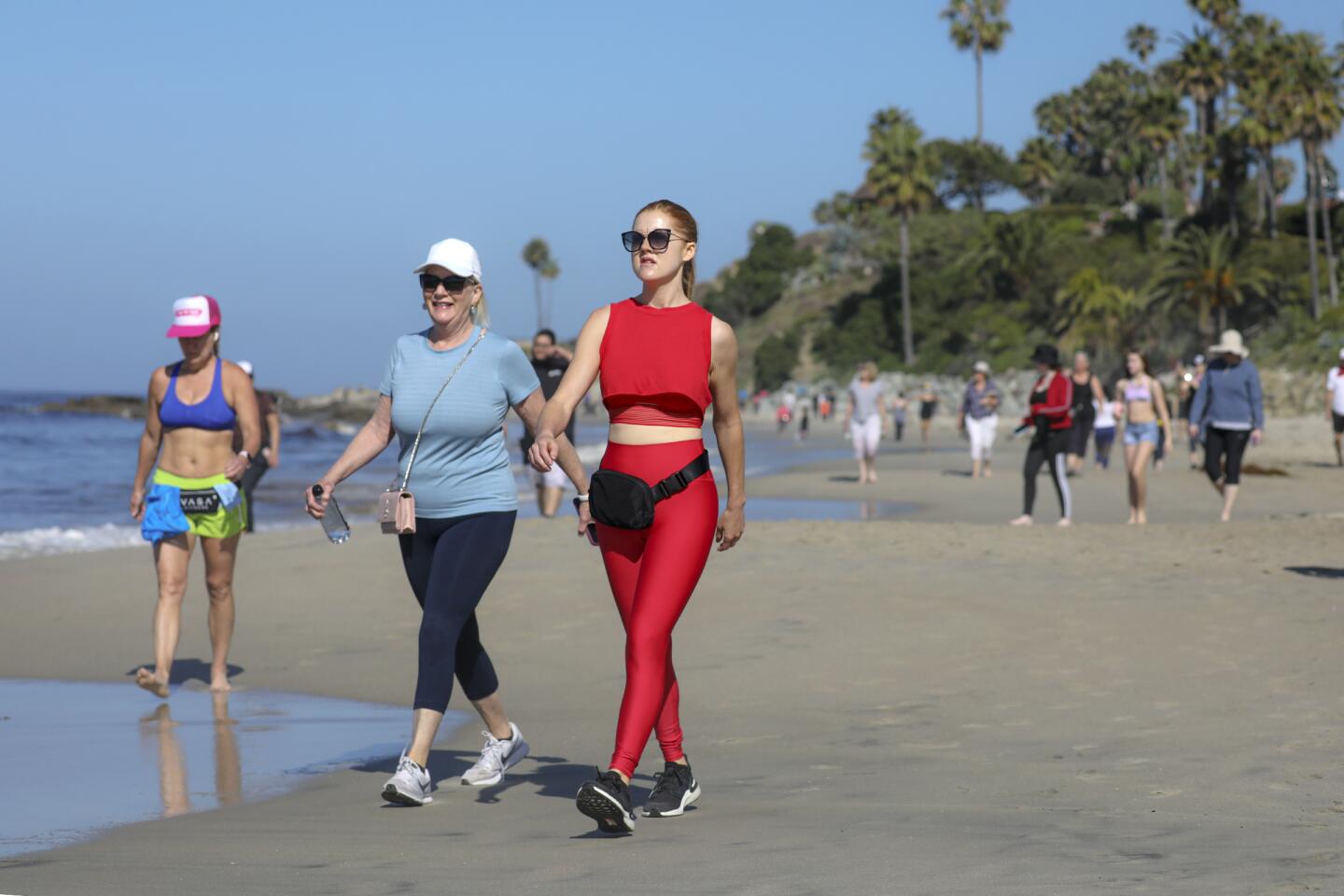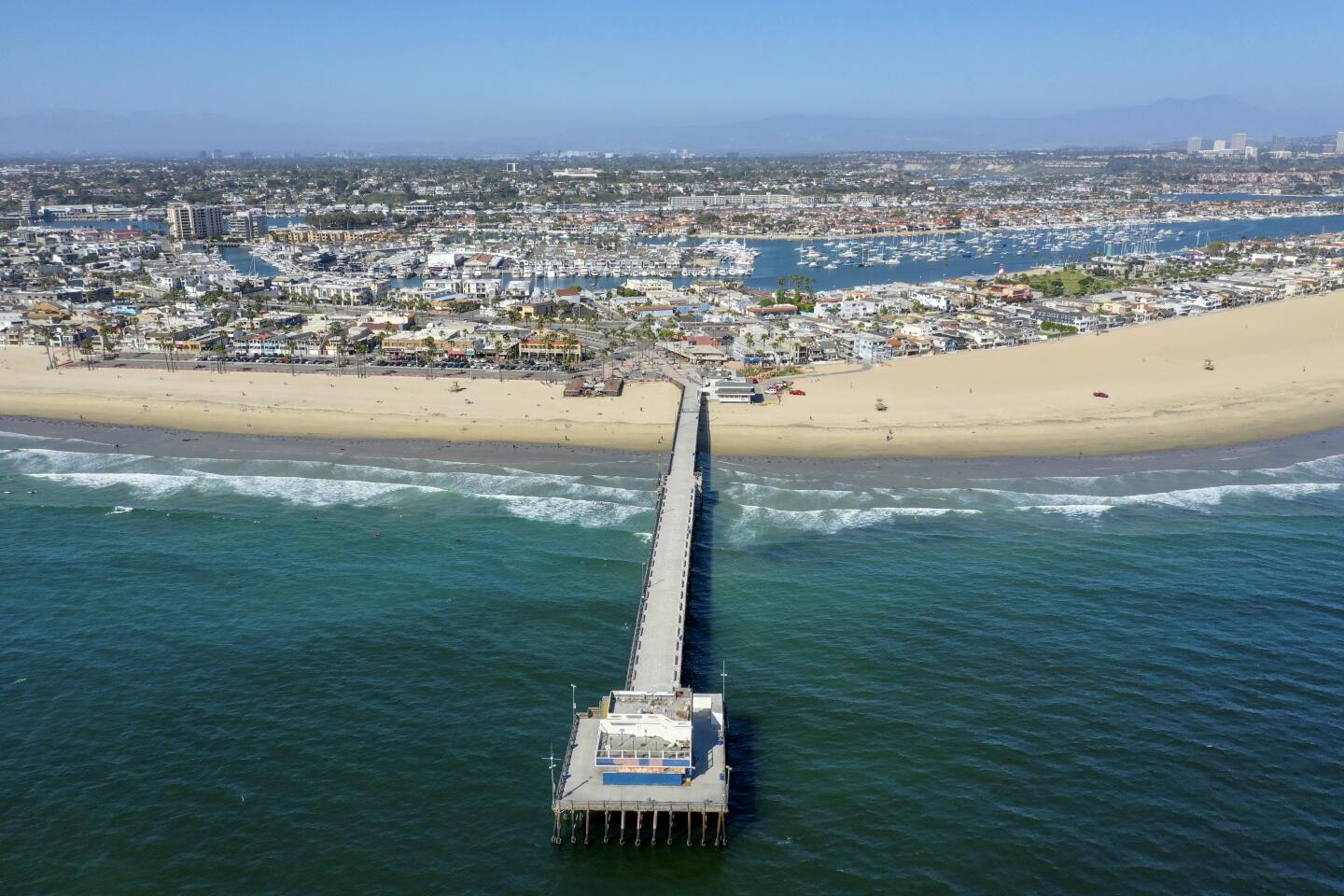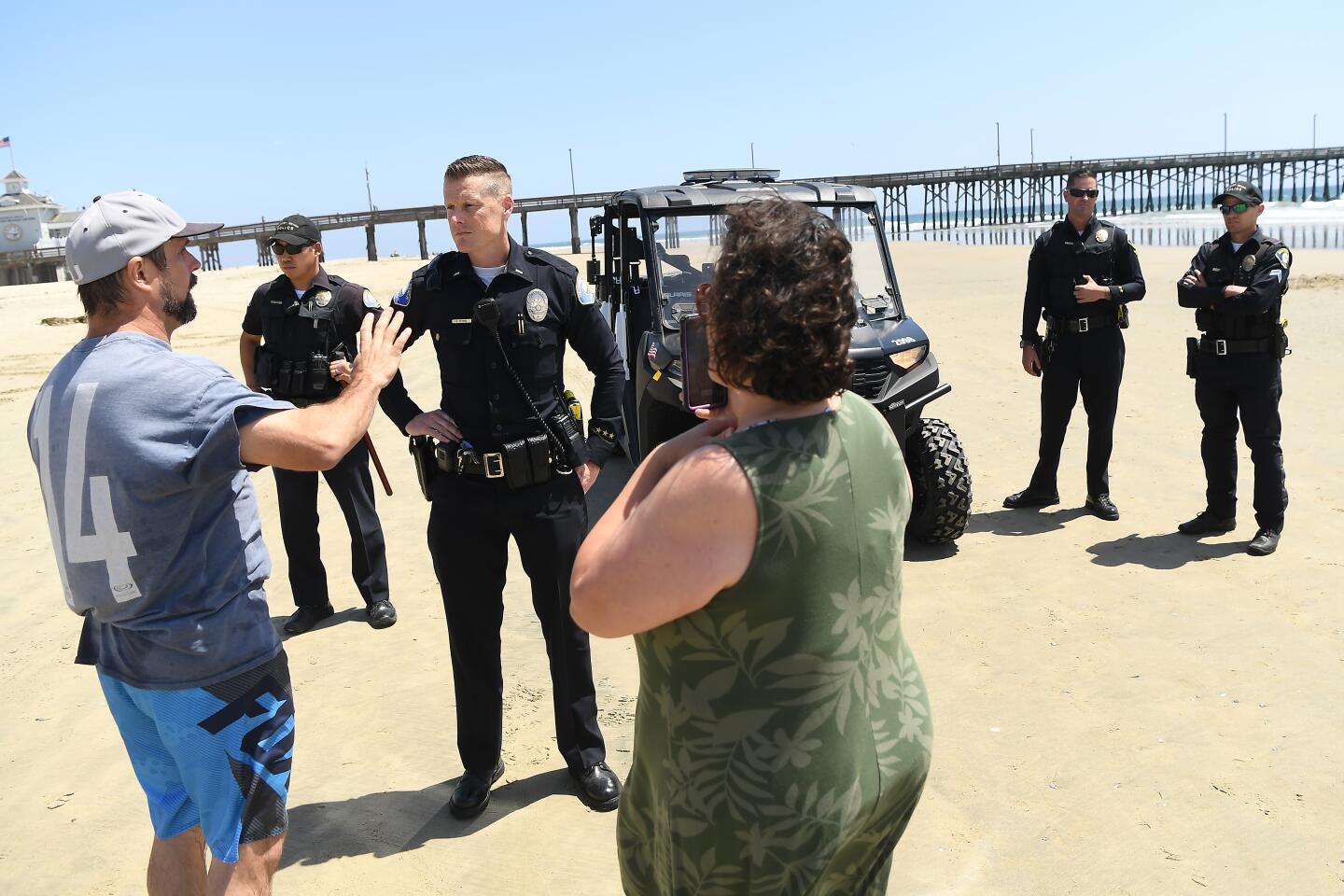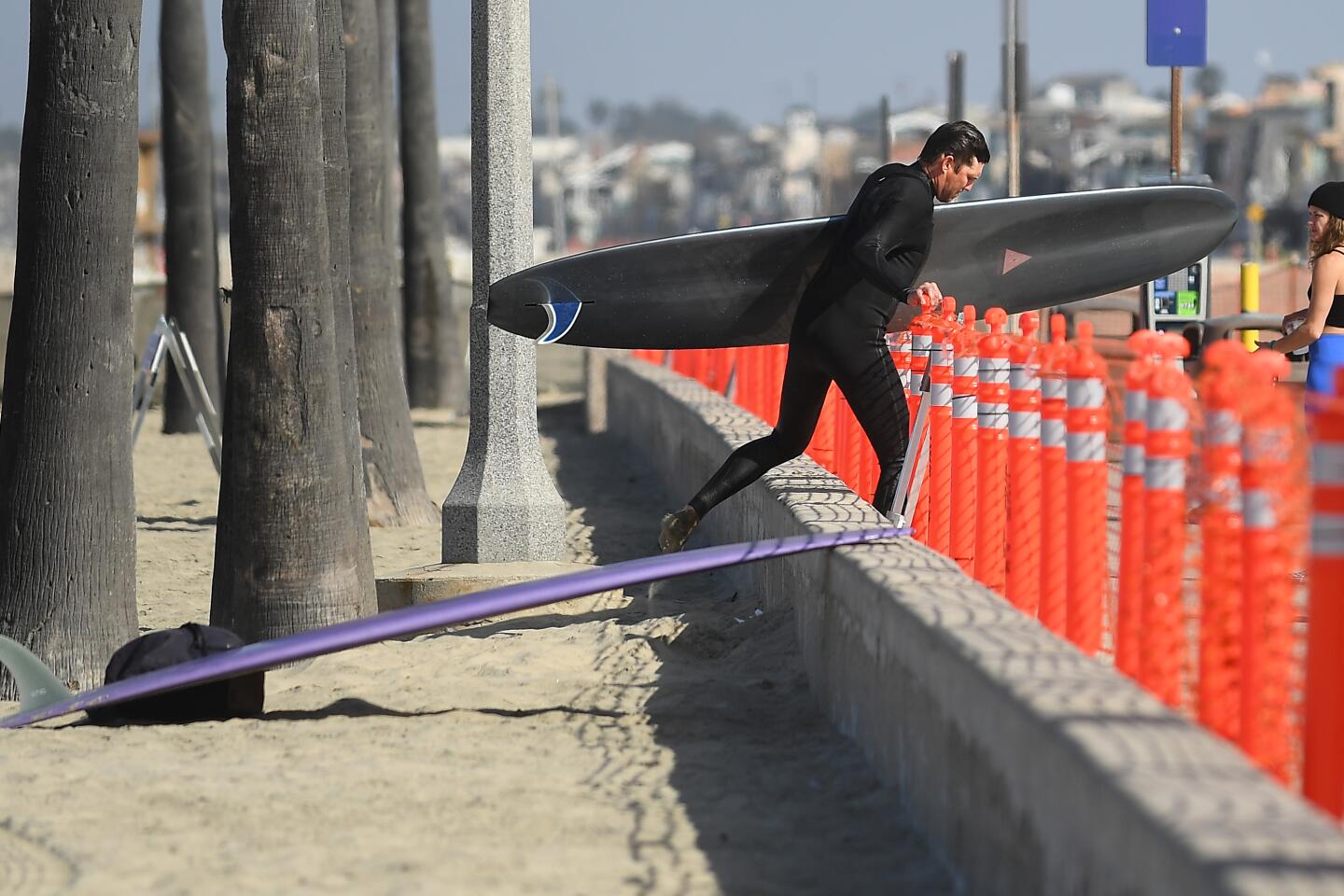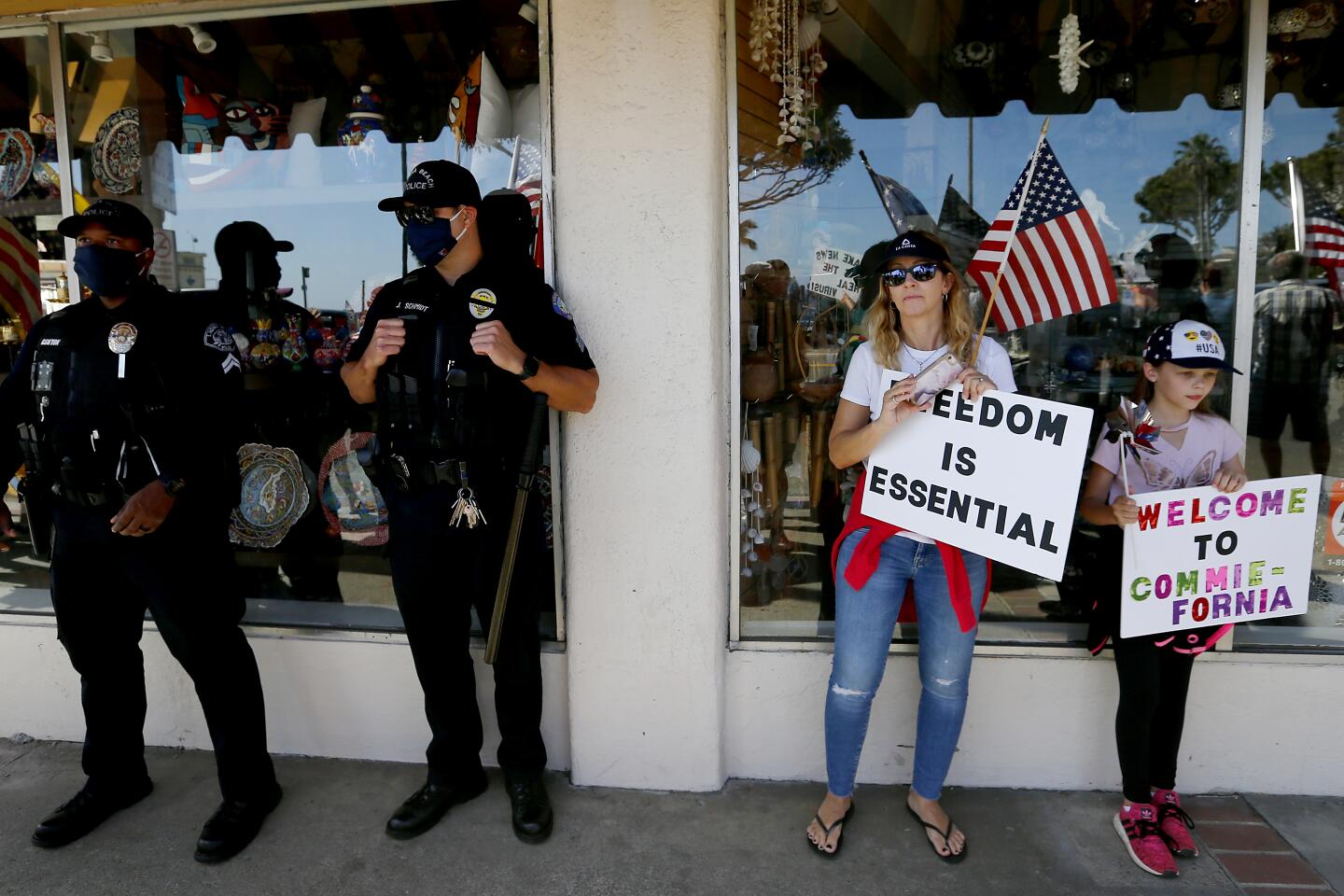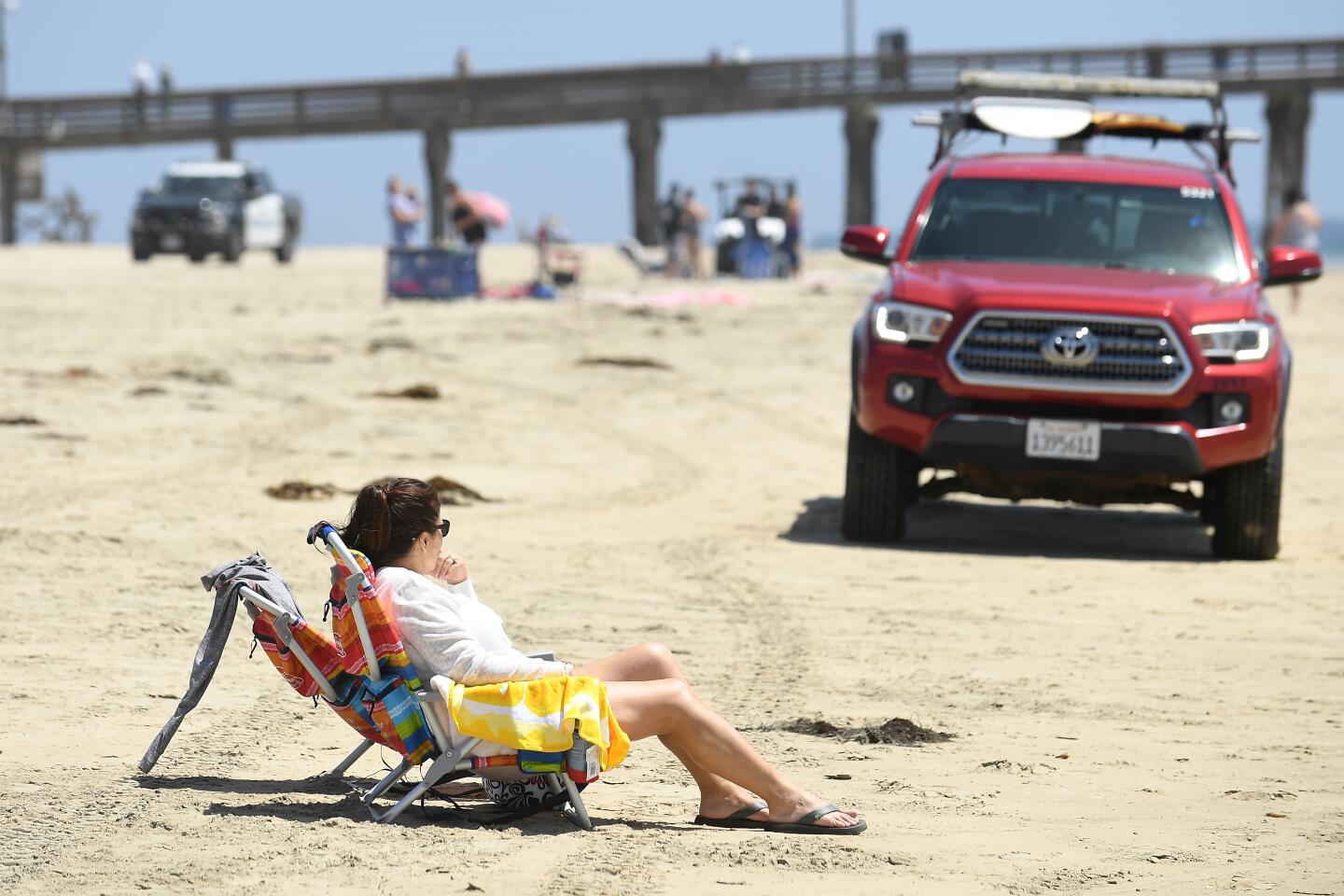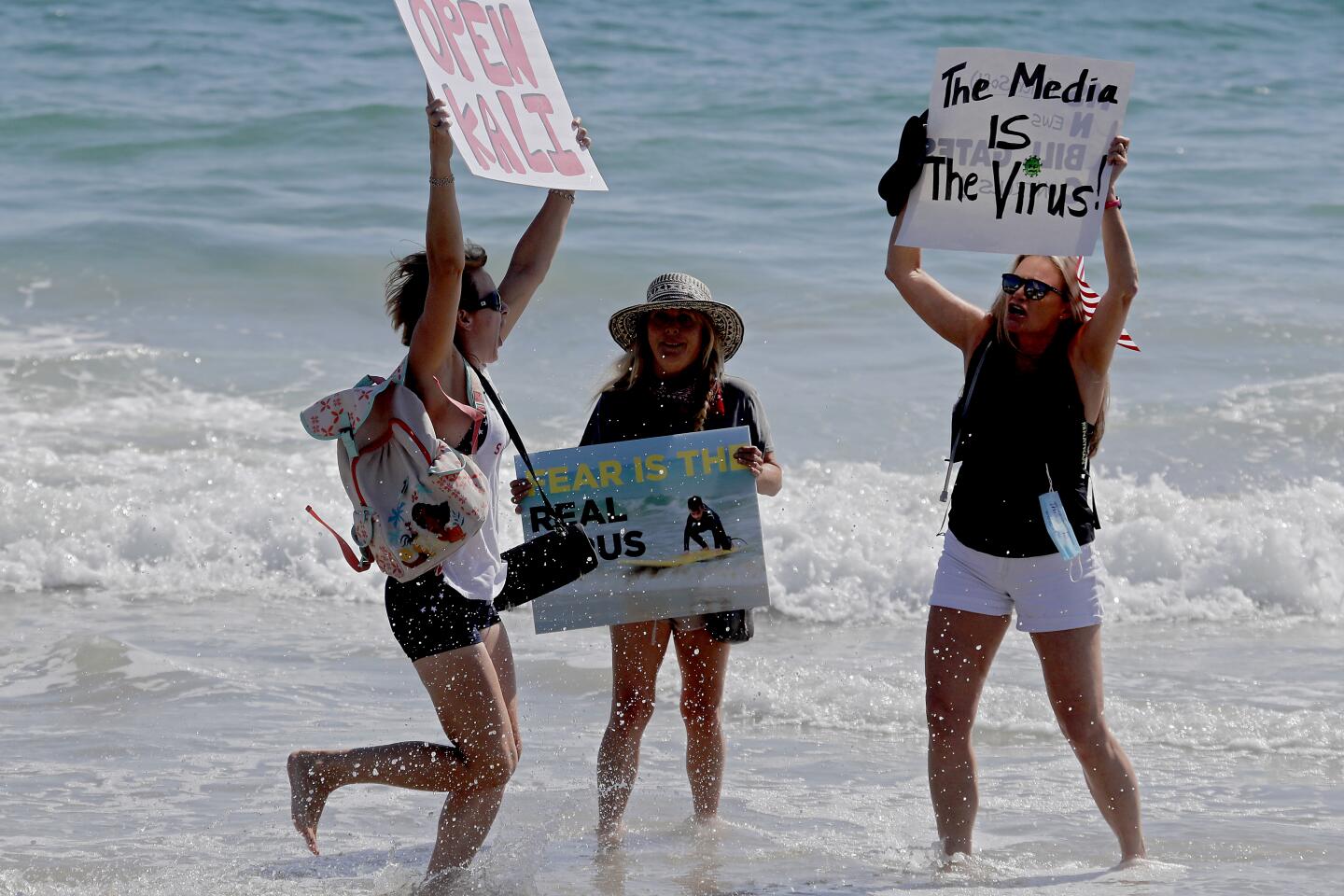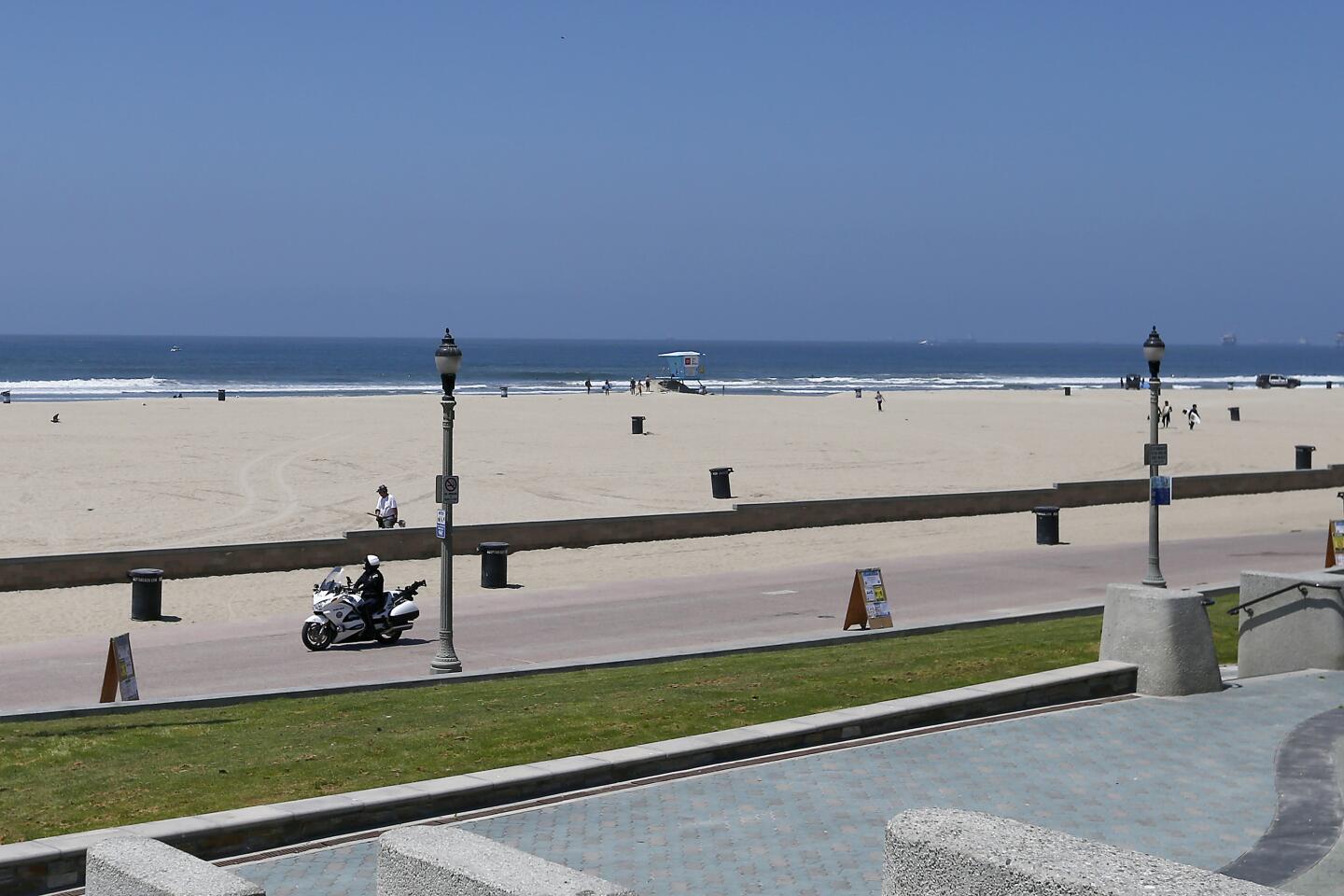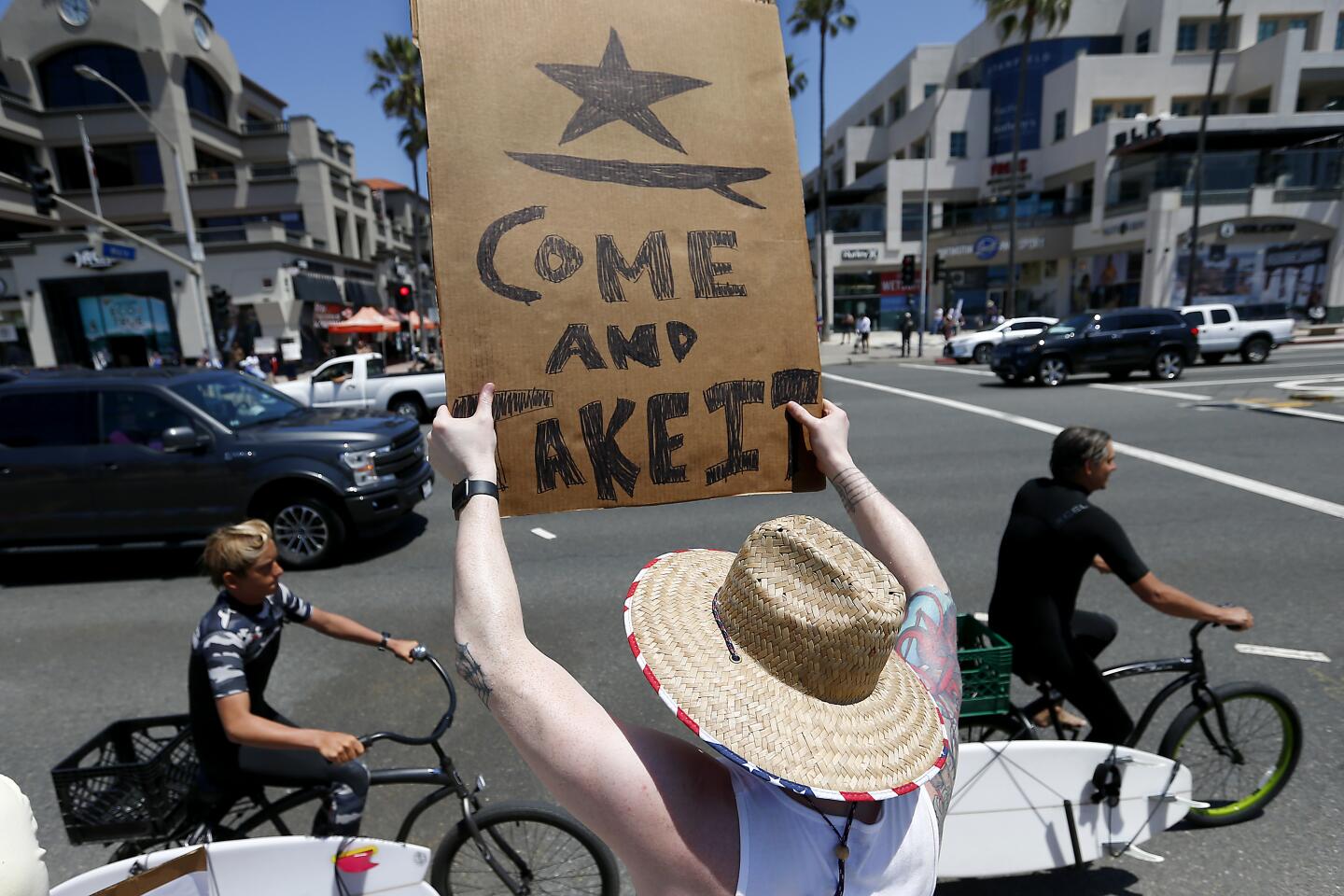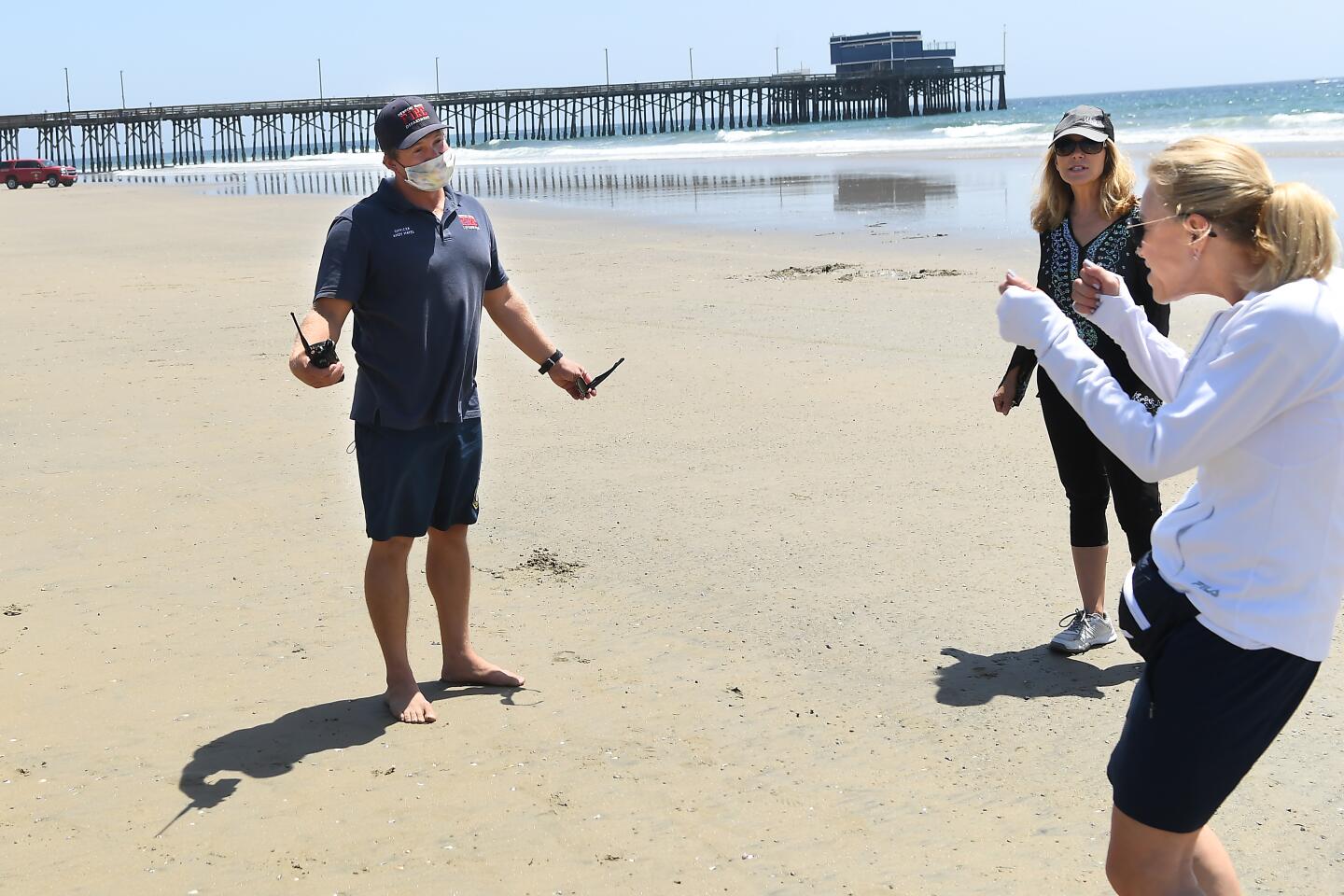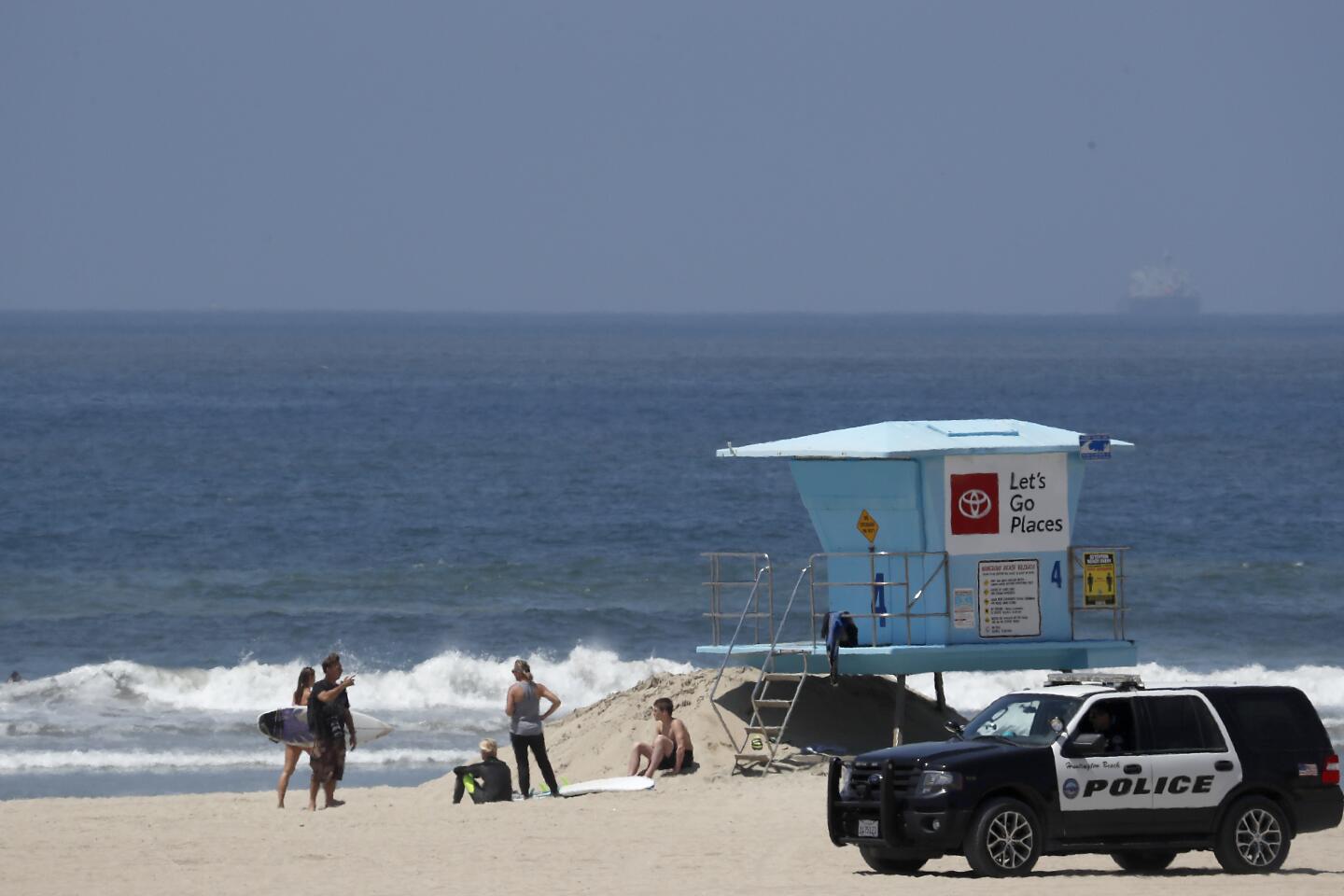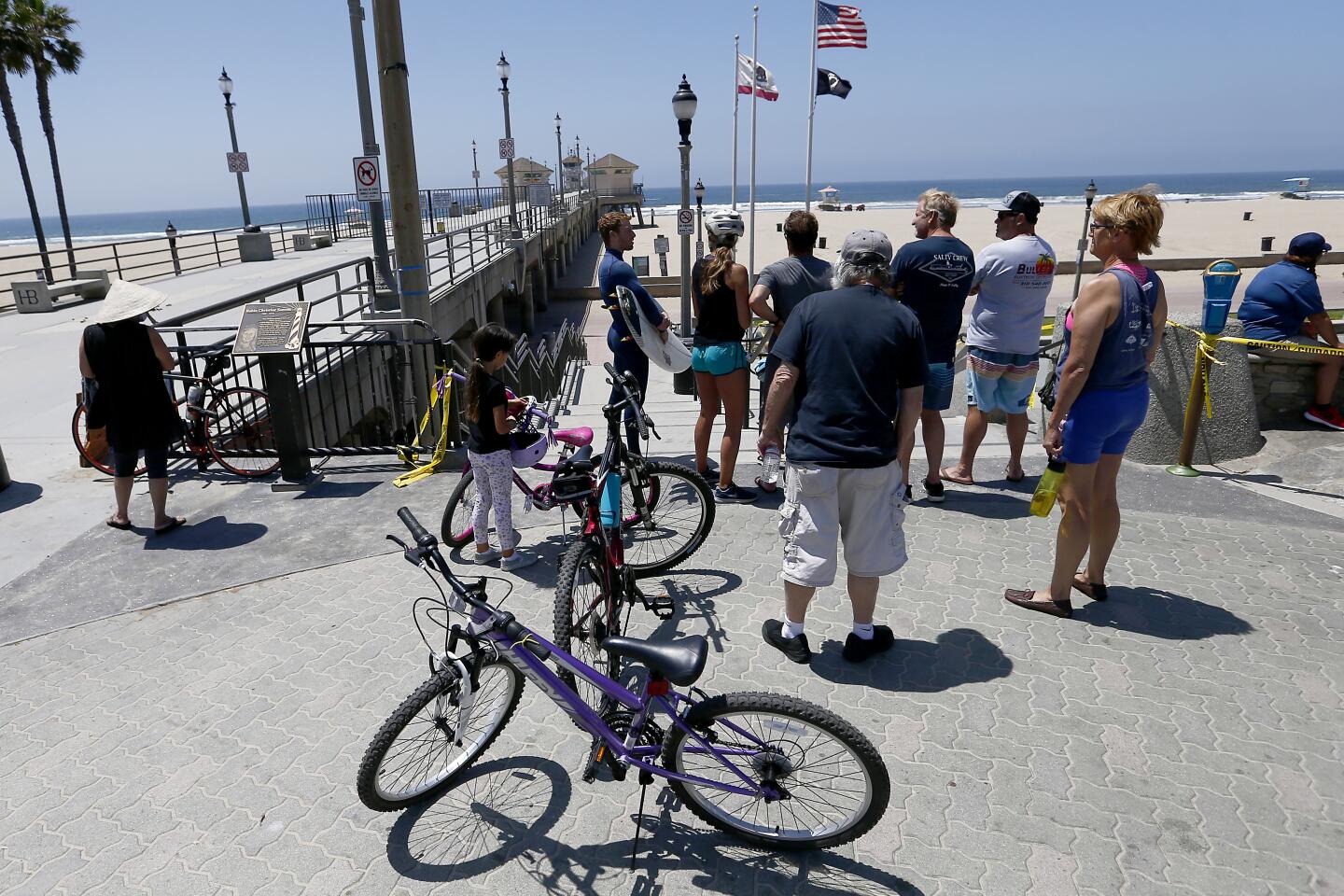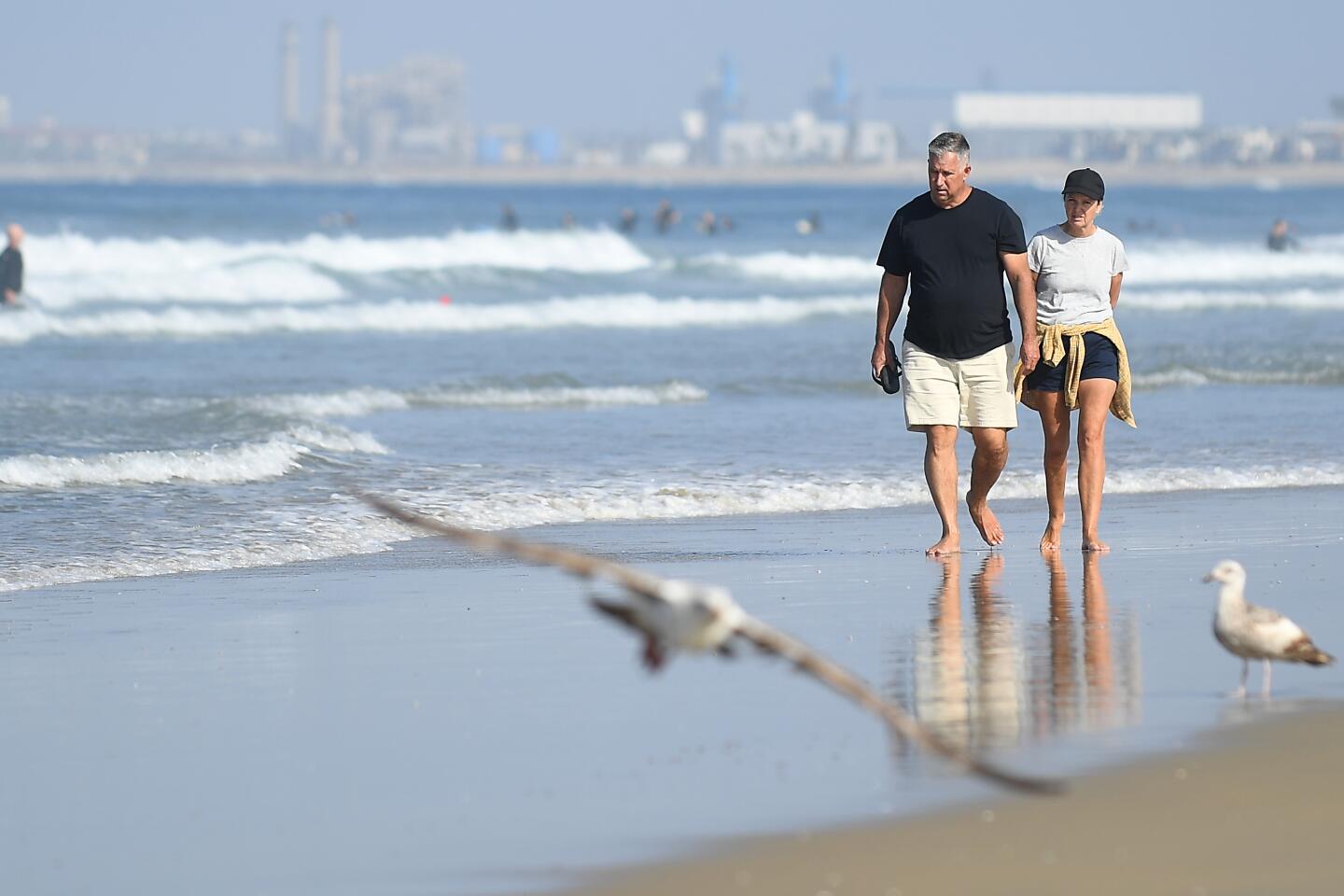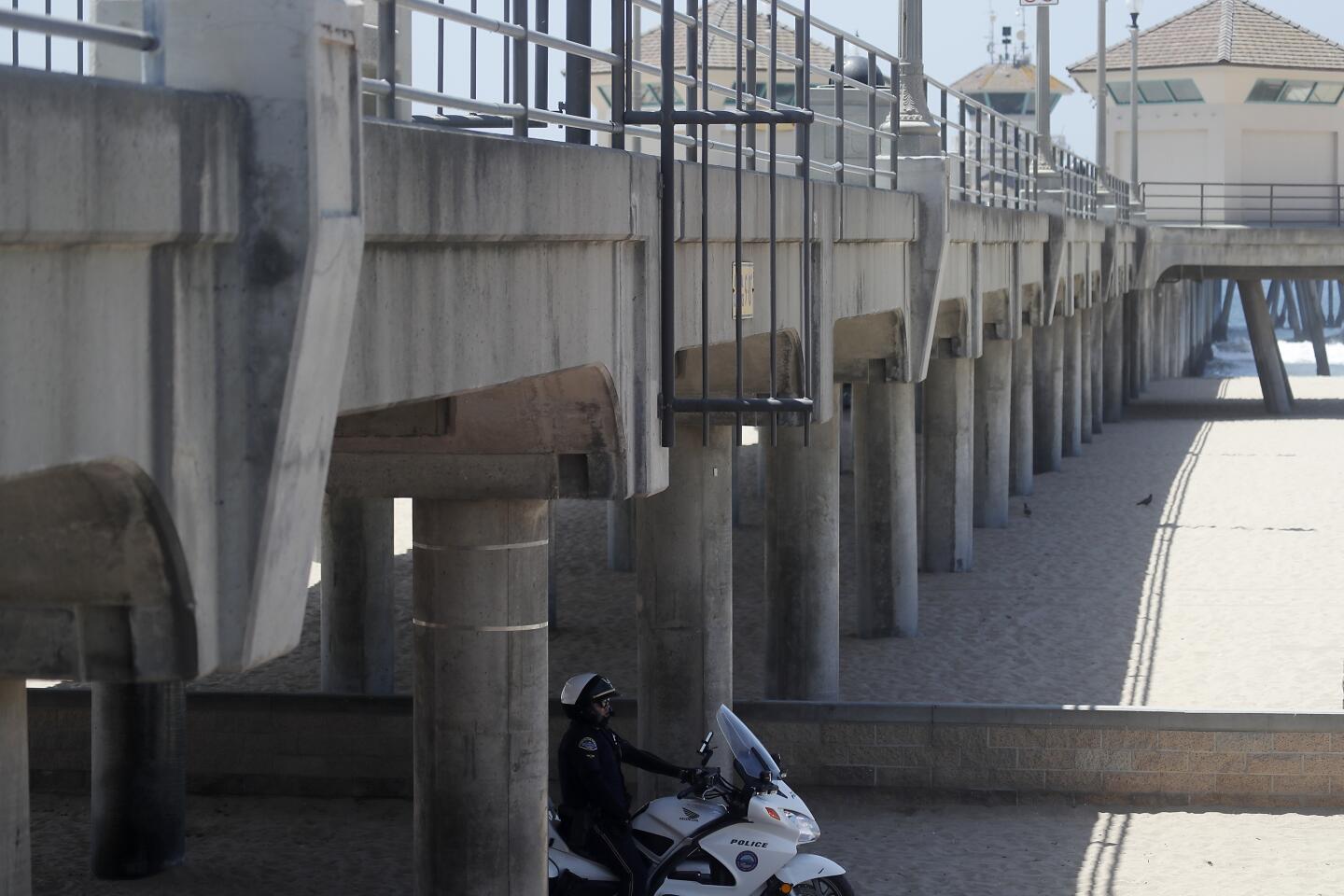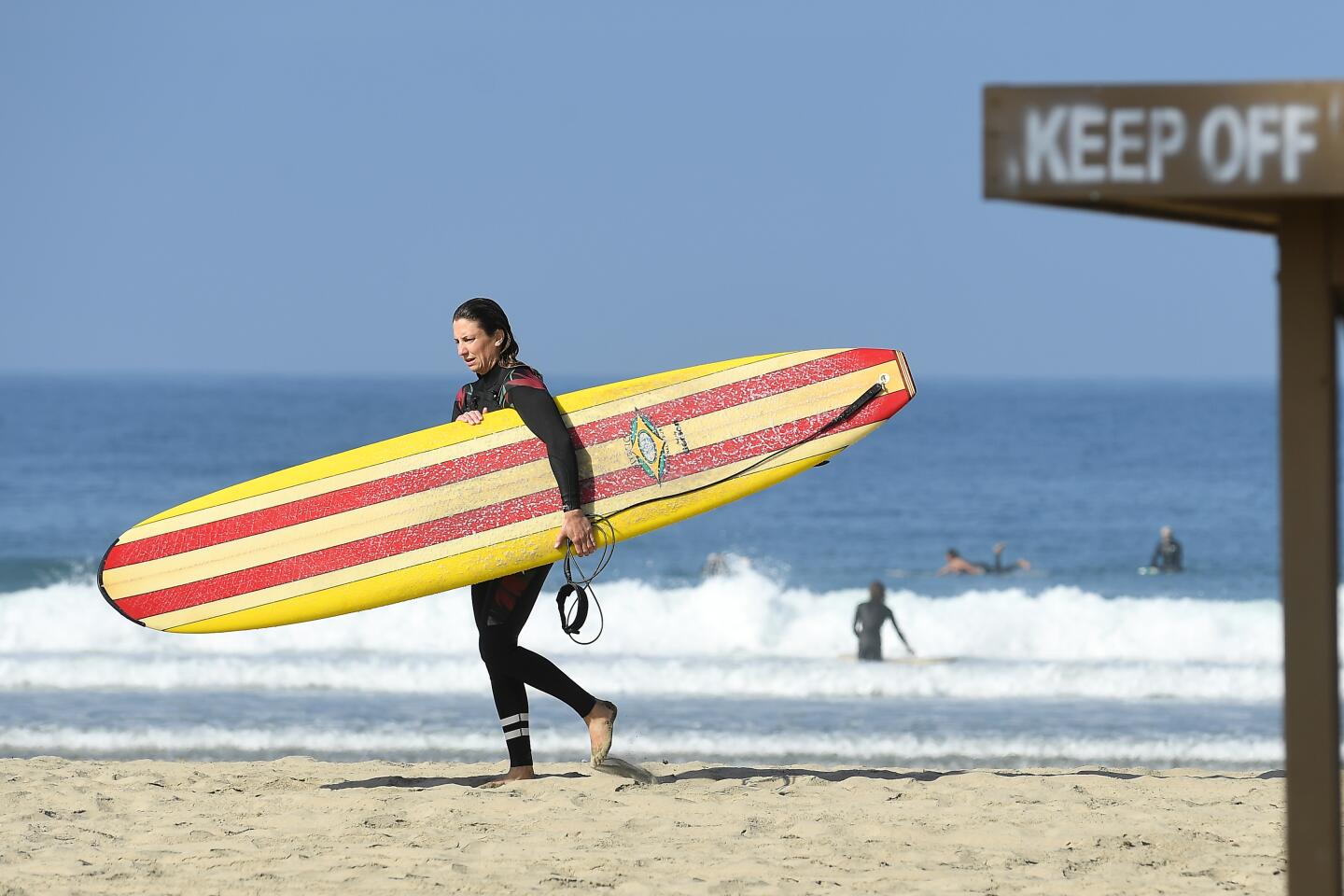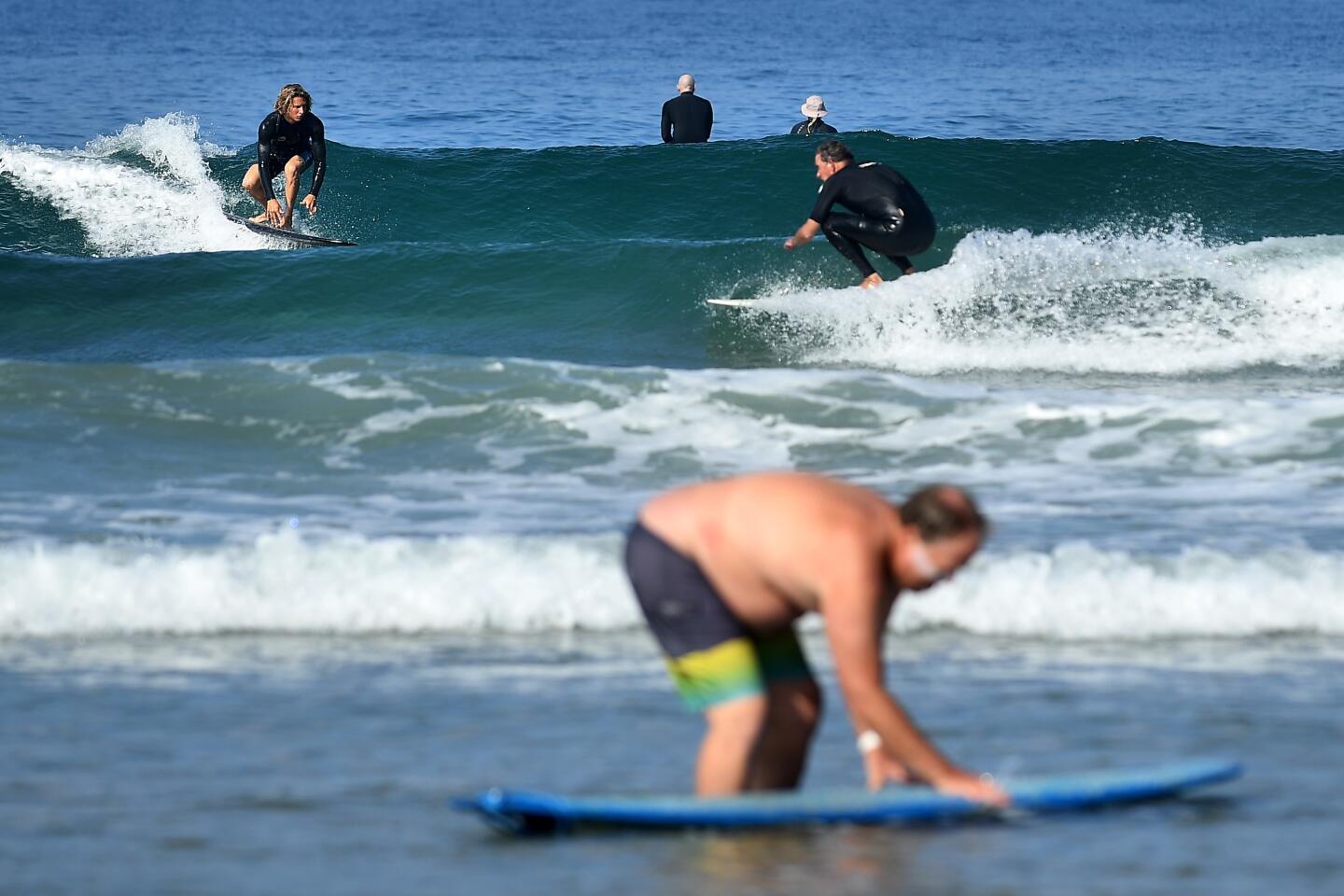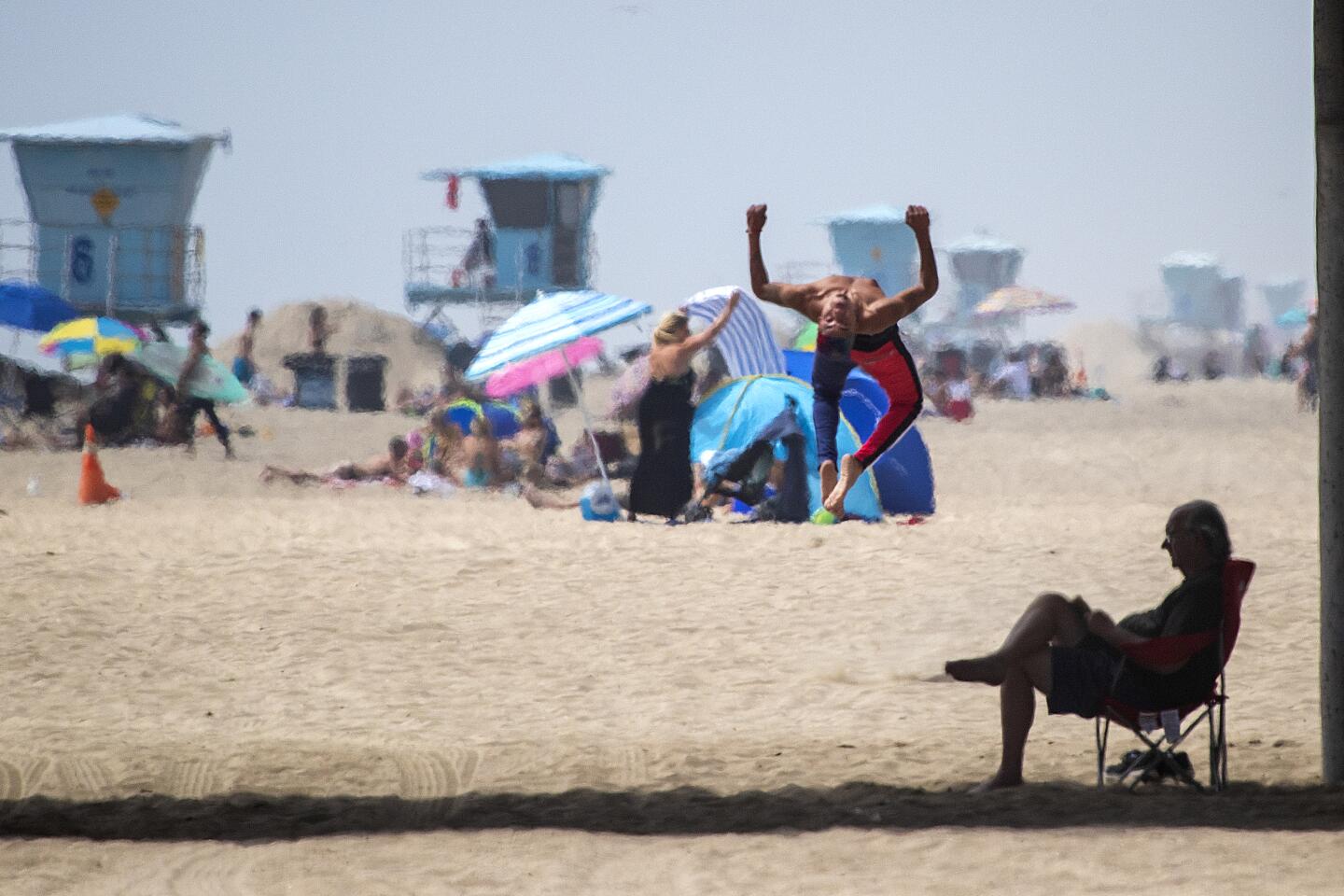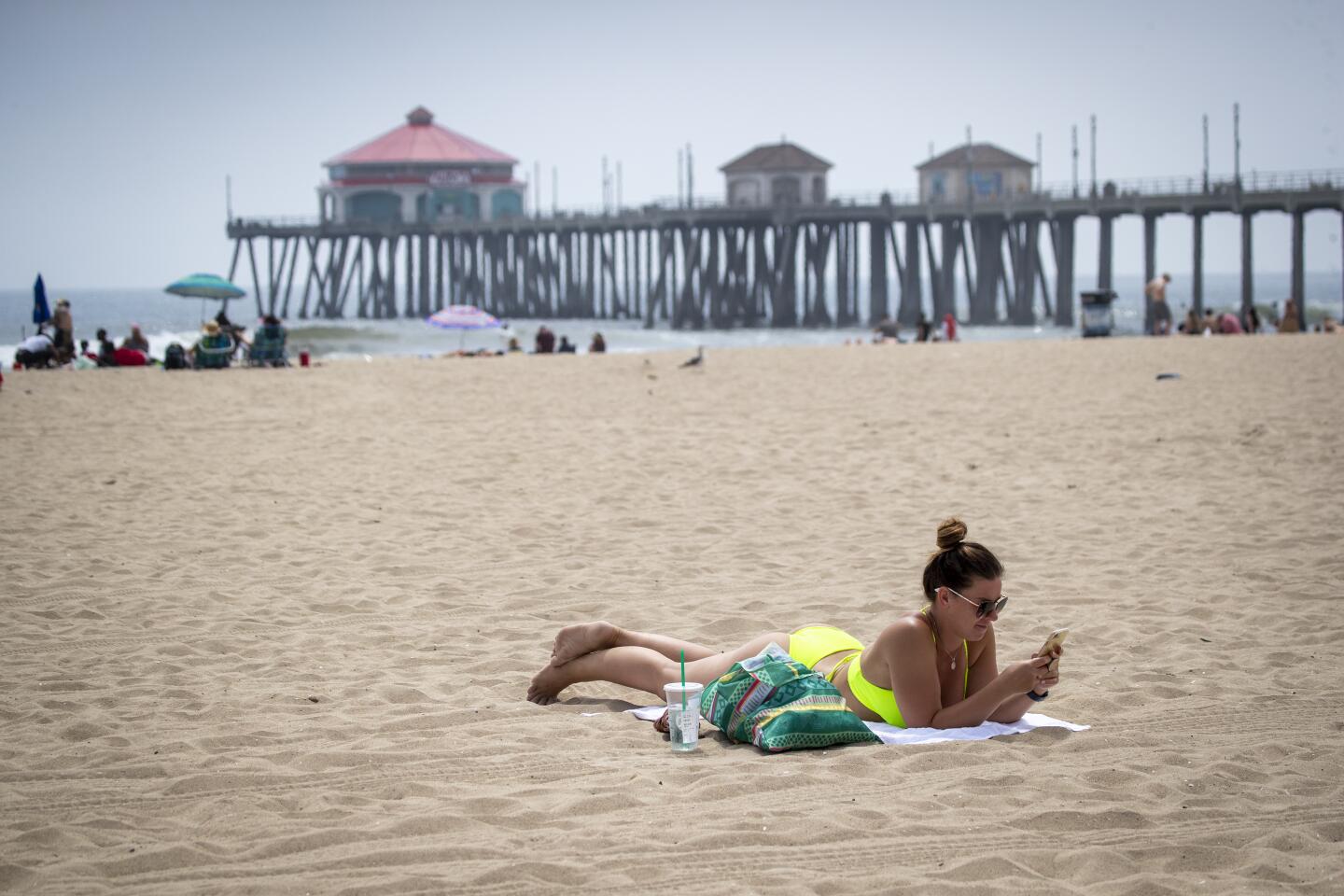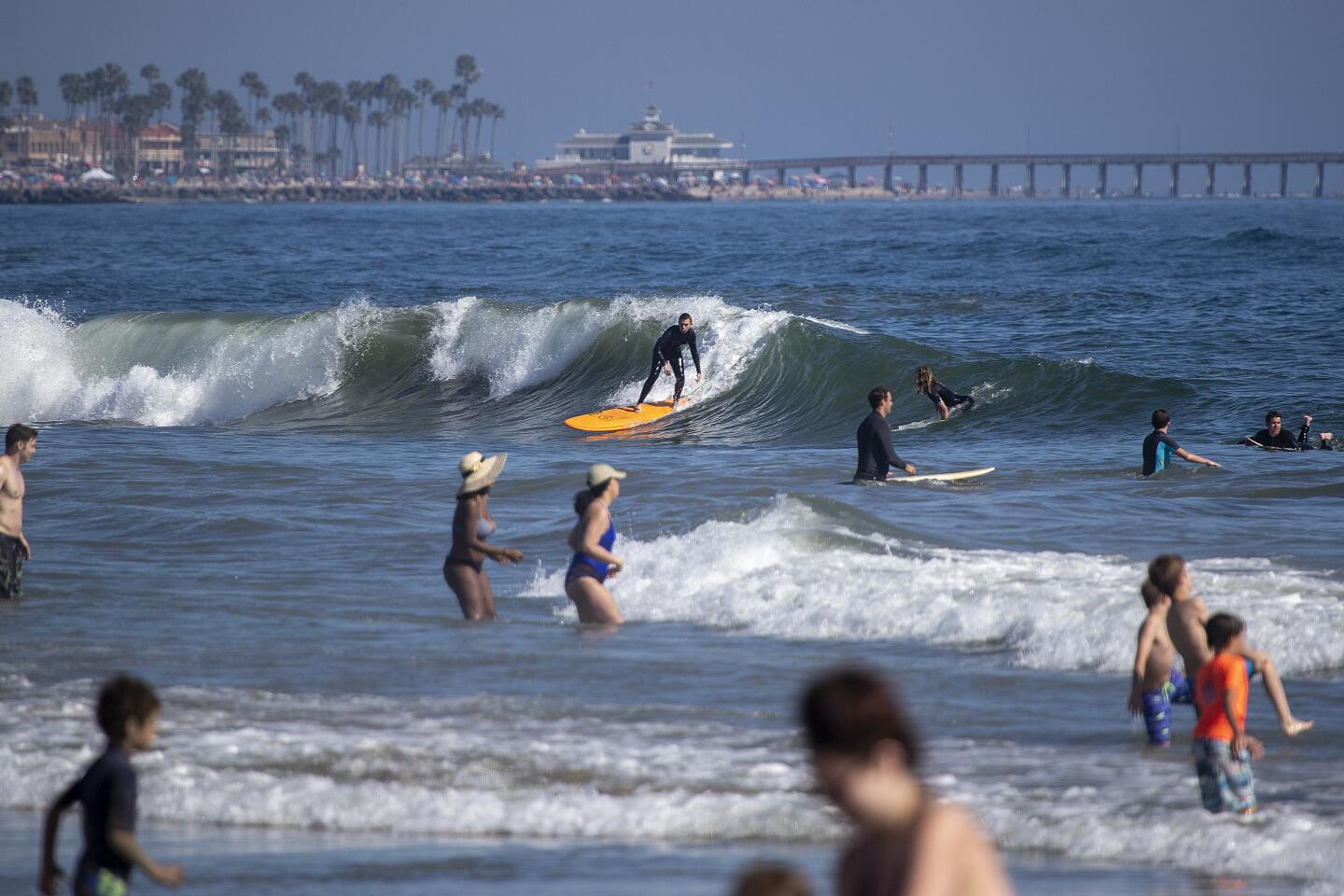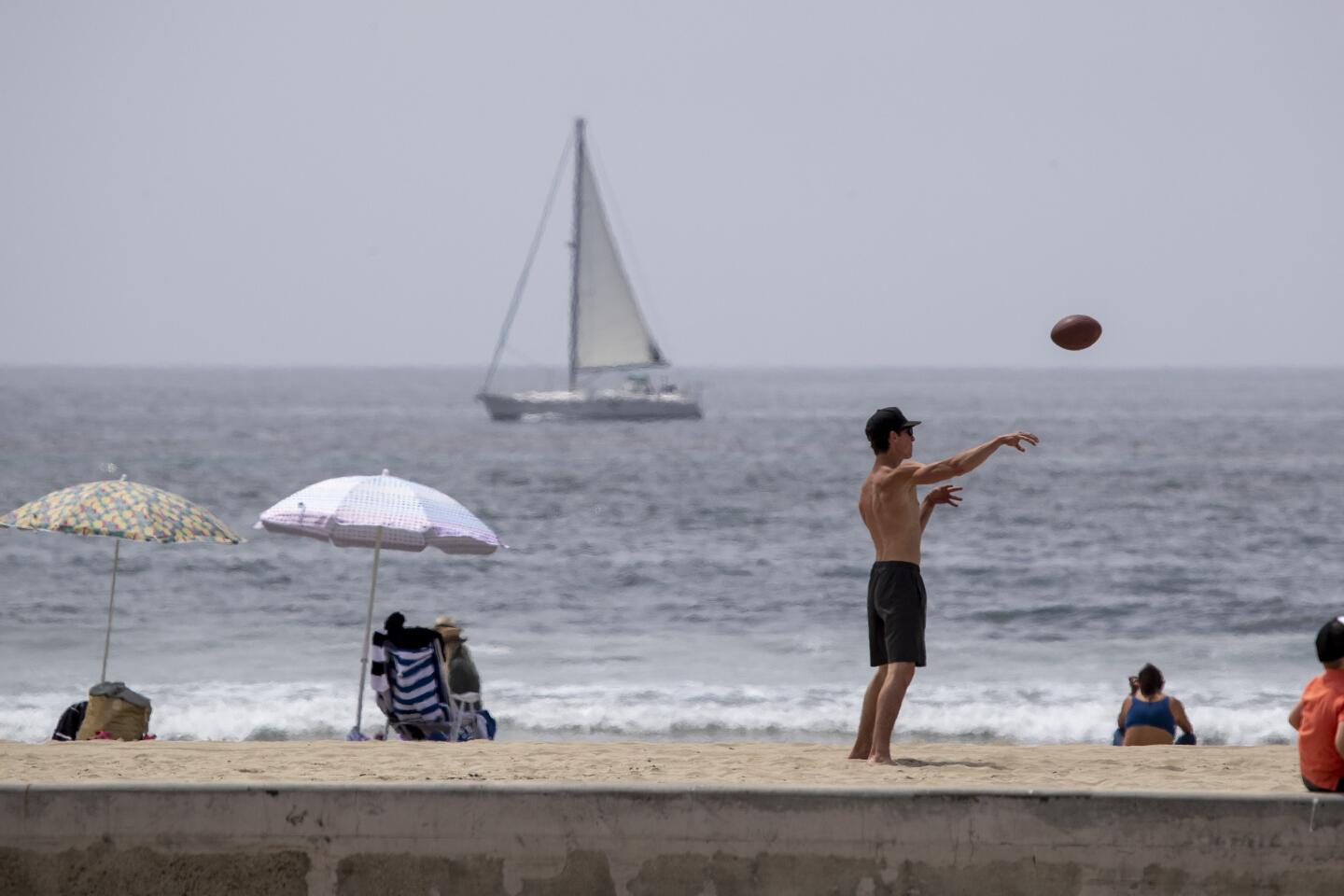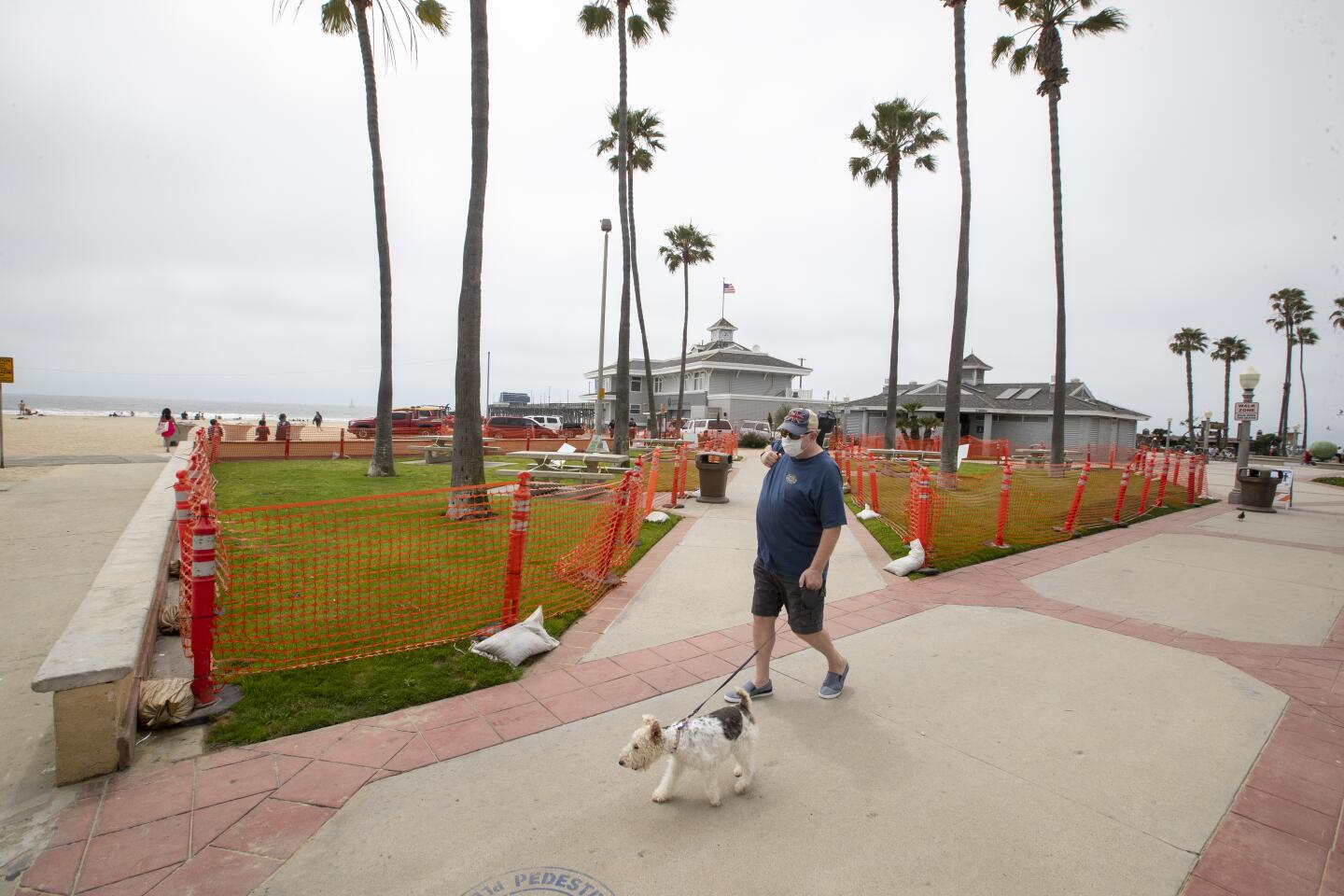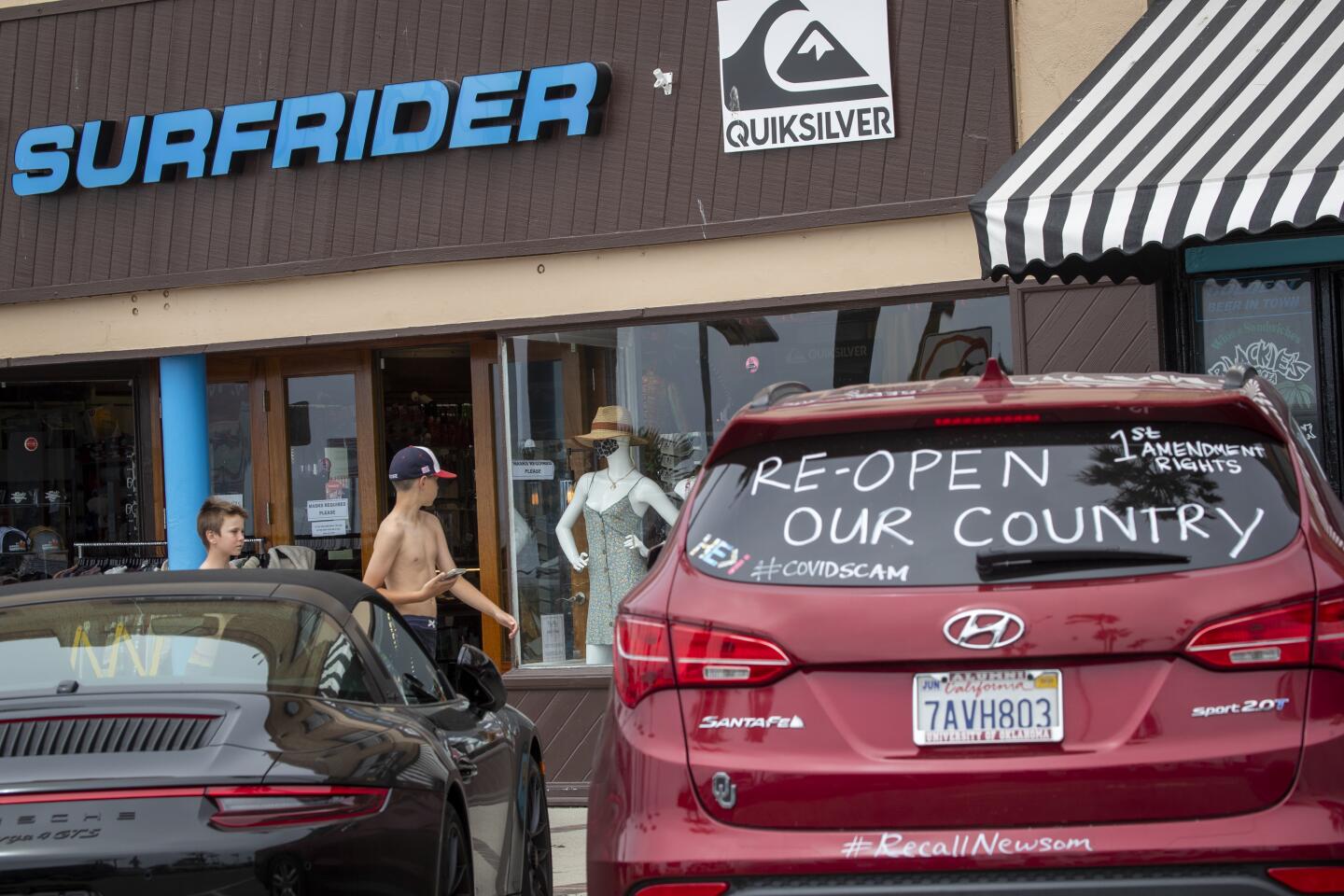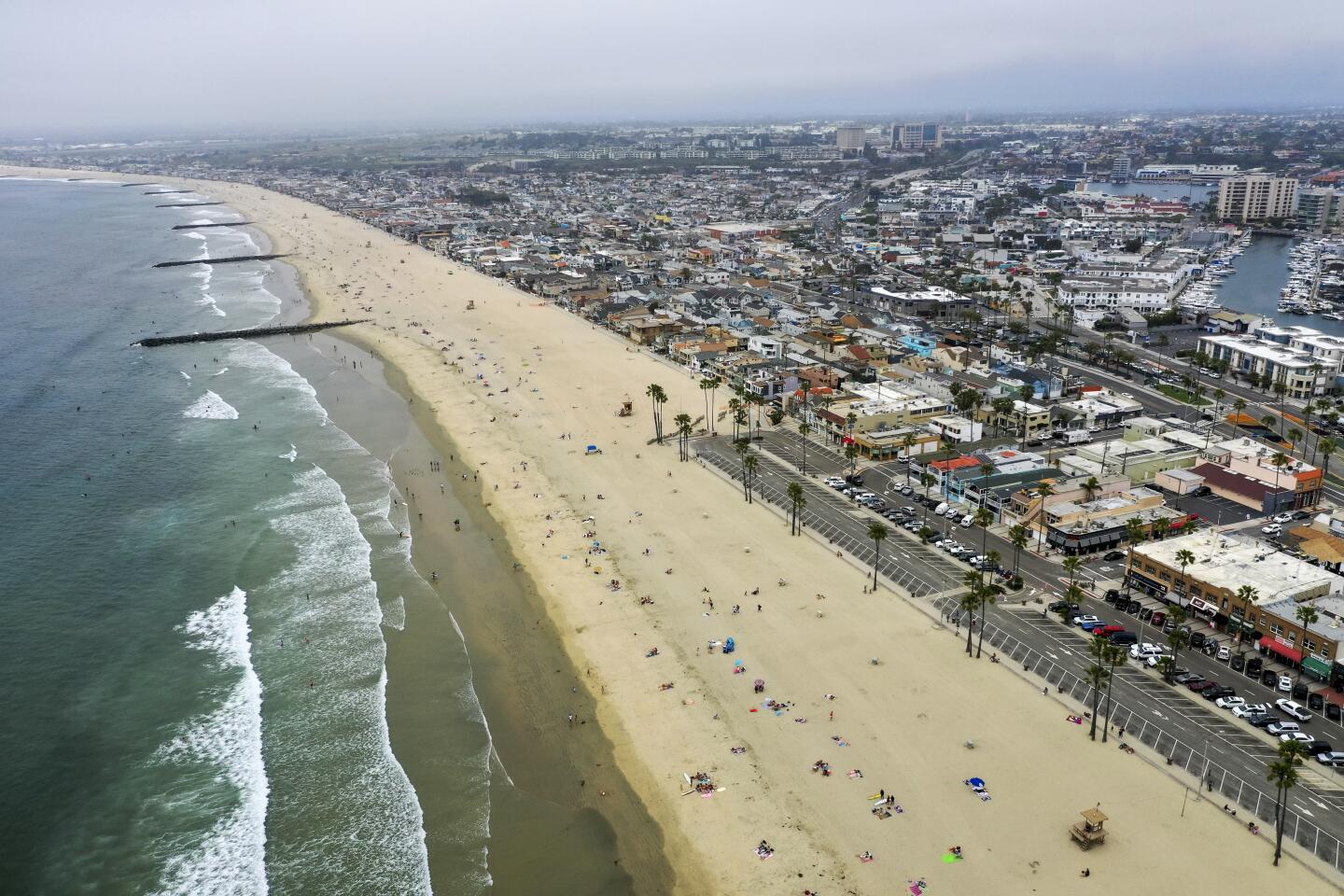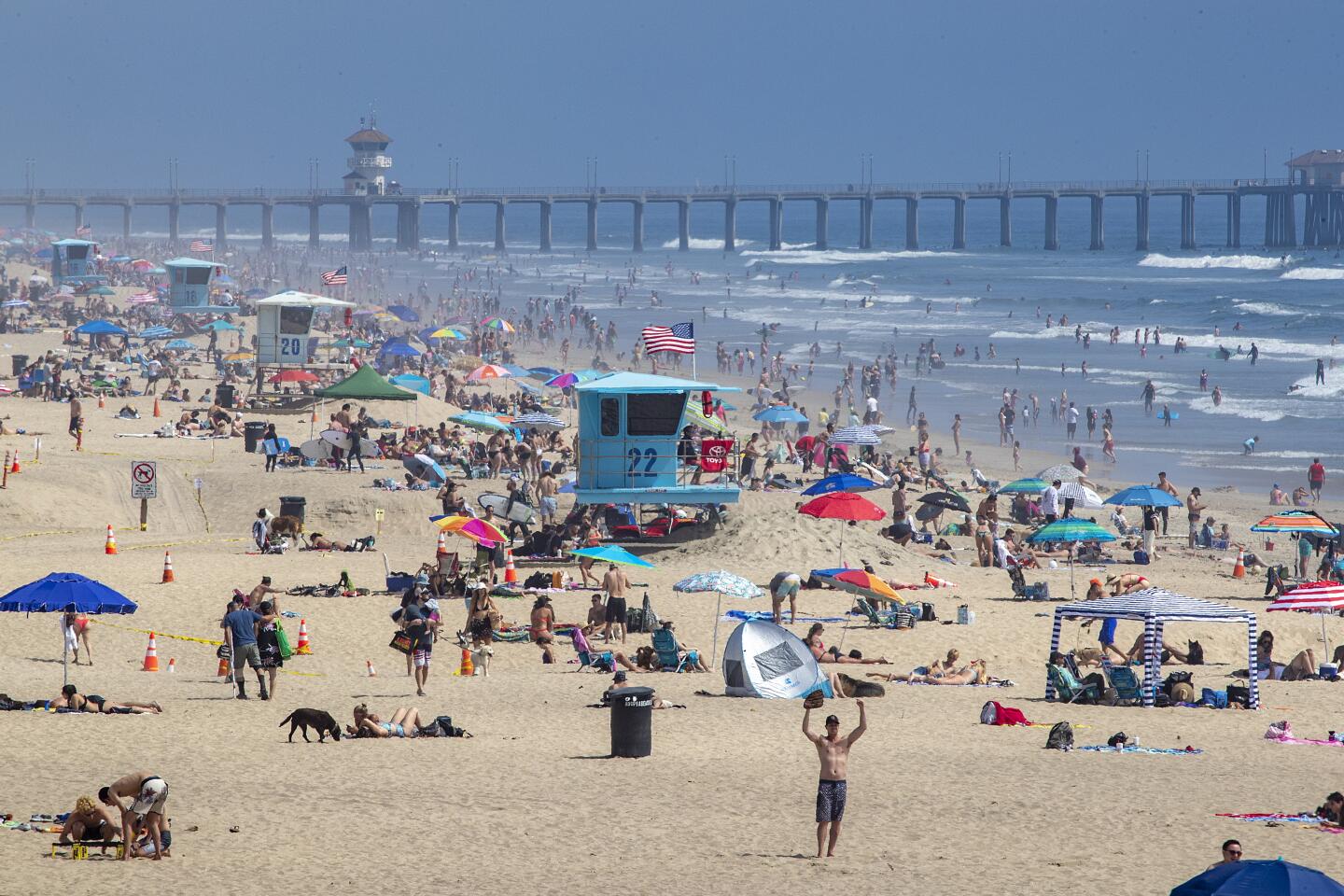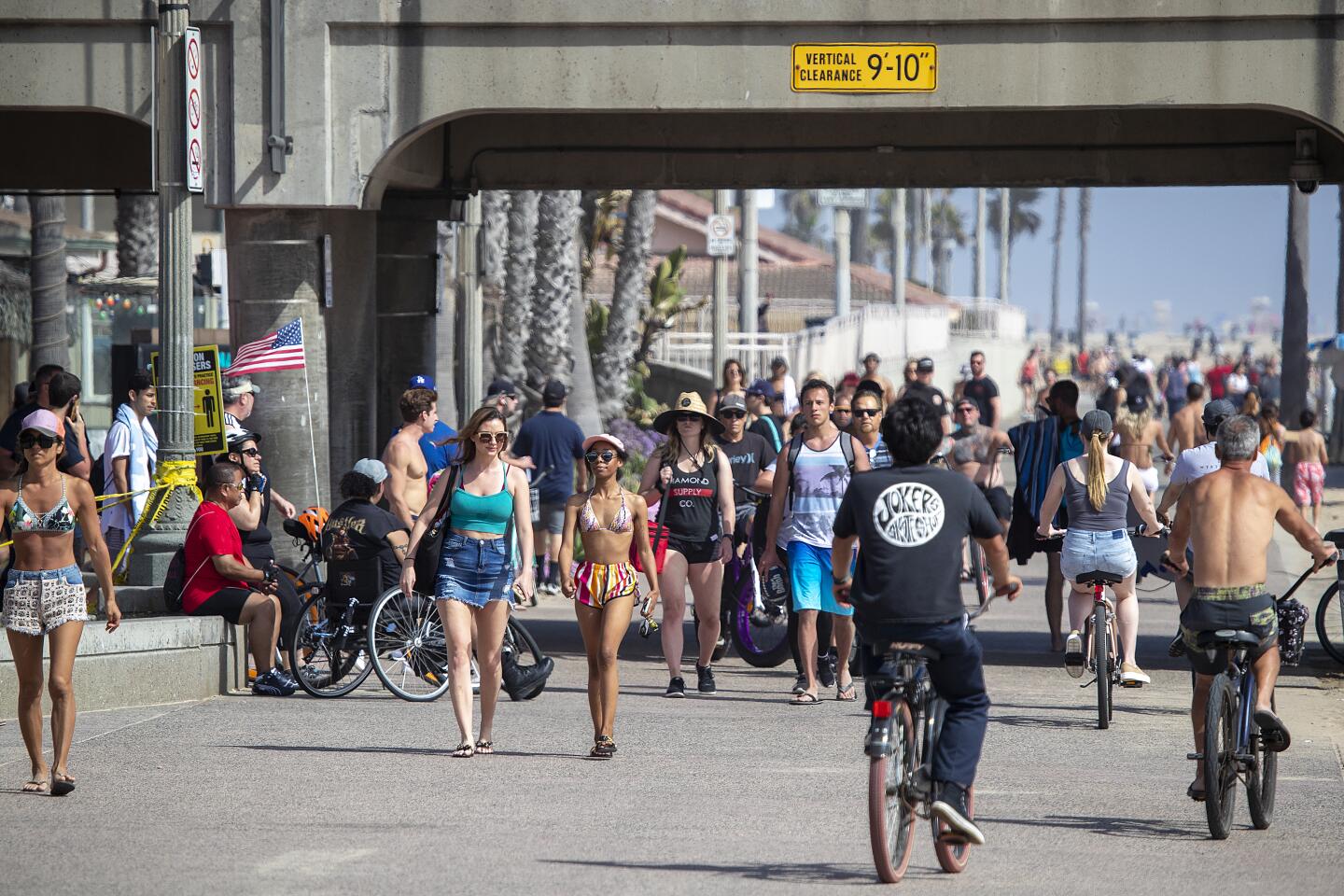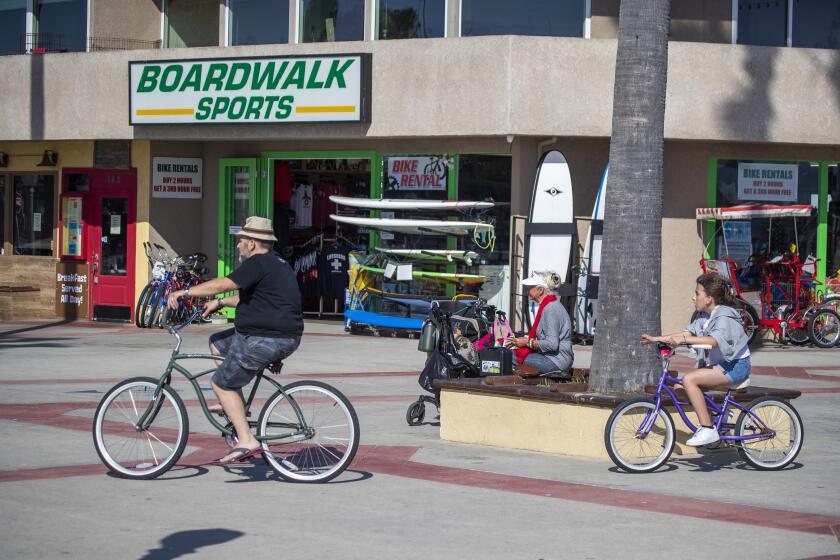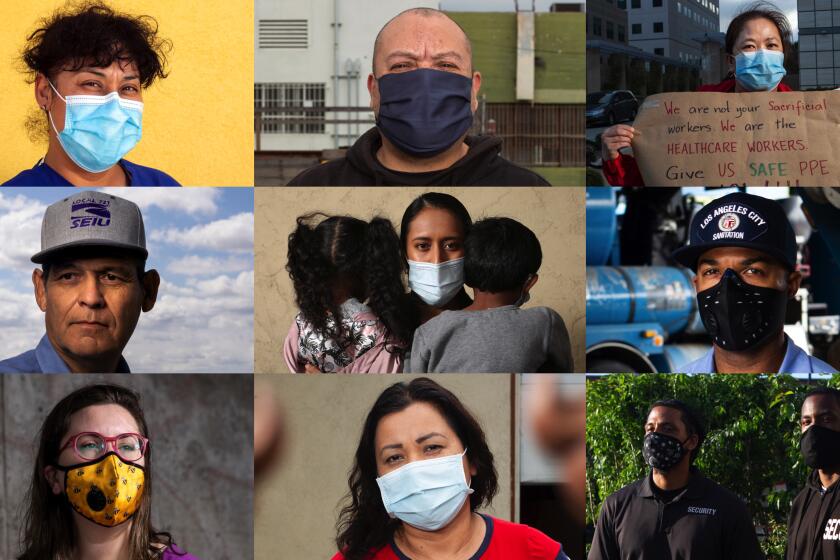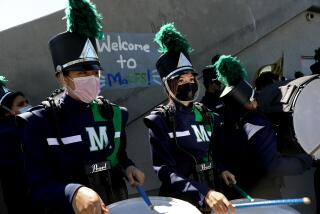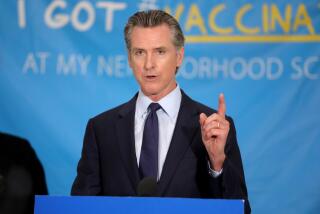Gov. Gavin Newsom says reopening California will begin this week amid coronavirus crisis

- Share via
SACRAMENTO — Gov. Gavin Newsom announced that some retail stores across the state can reopen with modifications as early as Friday amid growing pressure to ease the stay-at-home order that has cratered the California economy.
The new changes are part of a four-stage plan the governor laid out last week to gradually transition back to normal in a state of nearly 40 million people whose lives have been upended by the COVID-19 pandemic.
“We are entering into the next phase this week,” Newsom said at his Monday news conference to provide an update on the state’s response. “This is a very positive sign and it’s happened only for one reason: The data says it can happen.”
Under the new statewide COVID-19 guidelines, the governor said bookstores, music stores, toy stores, florists, sporting goods retailers and others can reopen for pickup, and manufacturing and logistics can resume in the retail supply chain. Newsom said more detailed guidelines on the businesses that can resume limited operations would be released later this week.
The governor’s plan also expands decision-making at the local level, allowing some communities to move further ahead into the second phase of the reopening process at their own pace and open more businesses — such as restaurant dining rooms — beyond those outlined in the statewide policy.
But if communities want to take that next step, counties must first submit “containment plans” that meet certain requirements for hospital beds, testing kits and the ability to track infected people and trace their contacts, Newsom said. Other local orders that are more restrictive than statewide reopening plans would supersede any changes the governor makes, Newsom said.
The Democratic governor’s move to give more discretion to counties follows large protests against Newsom’s restrictions at the state Capitol and in Orange County, and as a handful of small rural counties moved to open their communities in defiance of his authority.
Despite the vocal opposition in some parts of the state, recent polls show that the vast majority of Californians approve of how the governor is handling the coronavirus crisis and are more concerned about reopening too early than too late.
Though health experts have given Newsom credit for implementing the first statewide stay-at-home order in the nation and successfully beating back the virus in California, his efforts to protect public health by shuttering businesses and restricting movement have also caused economic peril. The state processed more than 3.5 million claims for unemployment benefits from March 14 through the third week in April.
Which California businesses can reopen this week?
The move to Stage 2 of the state’s reopening plan, which is set to begin Friday, will ultimately allow more businesses deemed to be at lower risk of spreading the virus to open in communities across California.
State officials cautioned office buildings, shopping malls and restaurant dining rooms will not be reopened Friday, but later on in Stage 2. Restrictions will be continually assessed and could be modified based on regional health conditions, including testing capabilities, officials said.
The Newsom administration has said Stage 3 would begin in “months” and include the opening of hair salons, gyms, sports competitions in empty stadiums and religious services. The final stage would mark the end of the stay-at-home order and all restrictions, allowing people to return to concerts and sporting events, which the governor has noted is unlikely to occur until a vaccine becomes widely available.
State Public Health Officer Sonia Angell said that as California eases stay-at-home rules and business closures, new safeguards will be put in place, with details expected to be announced Thursday.
“We want to make sure that both the workers and the customers are safe in these settings, which means that there will be modifications to ensure physical distancing and [to make] sure that the unique circumstances of those workplaces will be addressed,” she said.
One of the key tenets of Newsom’s plan to prepare the state to reopen is expanding government’s capacity to quickly identify infections and trace and quarantine the contacts of those who are infected to prevent rapid spread and additional outbreaks.
L.A school officials say the school year will start Aug. 18, but they plan to take a cautious path forward to reopening campuses as worries persist over health and safety concerns amid the coronavirus outbreak.
The task proved to be daunting during the first identified wave of coronavirus cases in February and March, with small and understaffed county health departments struggling to identify hundreds of potential contacts of infected people at a time when Californians still moved about freely.
The governor said Monday that the state is working with University of California campuses in San Francisco and Los Angeles to launch an online academy on Wednesday to recruit and train new tracers, potentially readying as many as 3,000 people per week for the job. He said the state has an initial goal of training 10,000 people, growing to 20,000 in the weeks ahead. Current state workers would be redeployed to work as tracers when the program launches, he said.
Twenty-three counties in California are actively tracing COVID-19 cases, Newsom said.
“This is all foundational, so that we can more quickly move to modify our stay-at-home order,” he said.
Angell said California is able to begin easing restrictions because residents have been diligent in adhering to the governor’s stay-at-home order and maintaining a safe distance from others when shopping or venturing outside. The statewide number of hospitalizations and ICU visits has stabilized over the last two weeks, she said.
“All of those people who’ve stayed home, all of those people who have worked in our essential workforce to make sure that we can stay home safely, that’s why we are where we are today,” Angell said. “As we begin to move forward to move out of our homes, we increase the risk of people getting sick and when people get sick, we want to make sure we’re there to protect them.”
Lines snake through parking lots at grocery stores. Buses carry people to essential jobs.
Angell said the state currently has 18.2 million surgical masks and 5.8 million face shields on hand, which are in the process of being distributed to medical facilities across California, and the state has already ordered hundreds of millions of additional masks.
California has set up 14 medical facilities outside the state’s hospital system ready to treat more than 2,000 patients in case there is a surge in the spread of the coronavirus. Statewide, there are also more than 10,000 ventilators — breathing machines that provide critical care for hospitalized COVID-19 patients — that are currently not in use and available.
The state also hit its goal in conducting 25,000 coronavirus tests per day, critical to identifying people stricken with the virus, isolating them and tracking down who they have been in contact with. All of those capabilities will be essential in the weeks and months ahead as restrictions are eased.
The announcement on Monday came as Yuba and Sutter Counties began to ease restrictions and days after Modoc County, where there are no confirmed COVID-19 cases, allowed all businesses, schools and churches to reopen on Friday if people can stay six feet apart.
Newsom cautioned that recent history has shown that countries that have eased up on restrictions prematurely have been hit with a second wave of the virus.
“There was a reason we put the stay-at-home order in the first place,” Newsom said. “This virus has not gone away. Let’s not develop amnesia. Let’s not forget why we’re in this position in the first place. Let’s not be naive about the virulence of this disease.”
Orange County Supervisor Lisa Bartlett said that counties throughout California are so different — whether urban, rural, coastal, inland, large or small —that it’s essential for each to tailor a plan for easing restrictions based on their unique circumstances. That’s especially true in counties with few or no COVID-19 cases, she said.
These are some of the unusual new scenes across the Southland during the coronavirus outbreak.
Bartlett said Newsom provided a “reasonable” plan to give county public health officers, along with county supervisors, more authority to develop such plans. The governor signed an executive order Monday that requires the state public health officer to develop criteria for the counties.
“It’s an appropriate position for California because Gov. Newsom knows we have 58 counties and they are vastly different,” said Bartlett, who is president of the California State Assn. of Counties. “Leaving it to local elected officials to working with their public health officers, I think is a great idea.”
More to Read
Sign up for Essential California
The most important California stories and recommendations in your inbox every morning.
You may occasionally receive promotional content from the Los Angeles Times.
